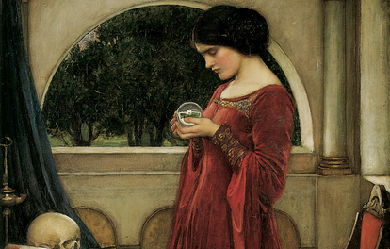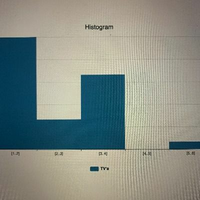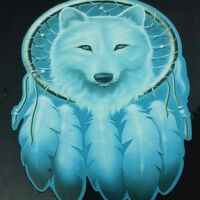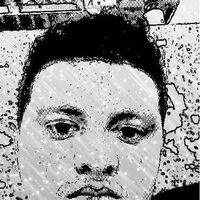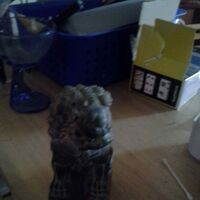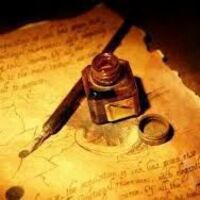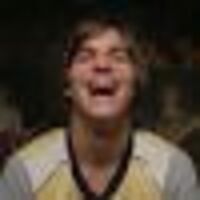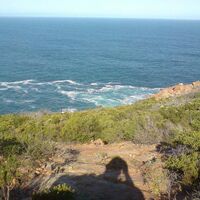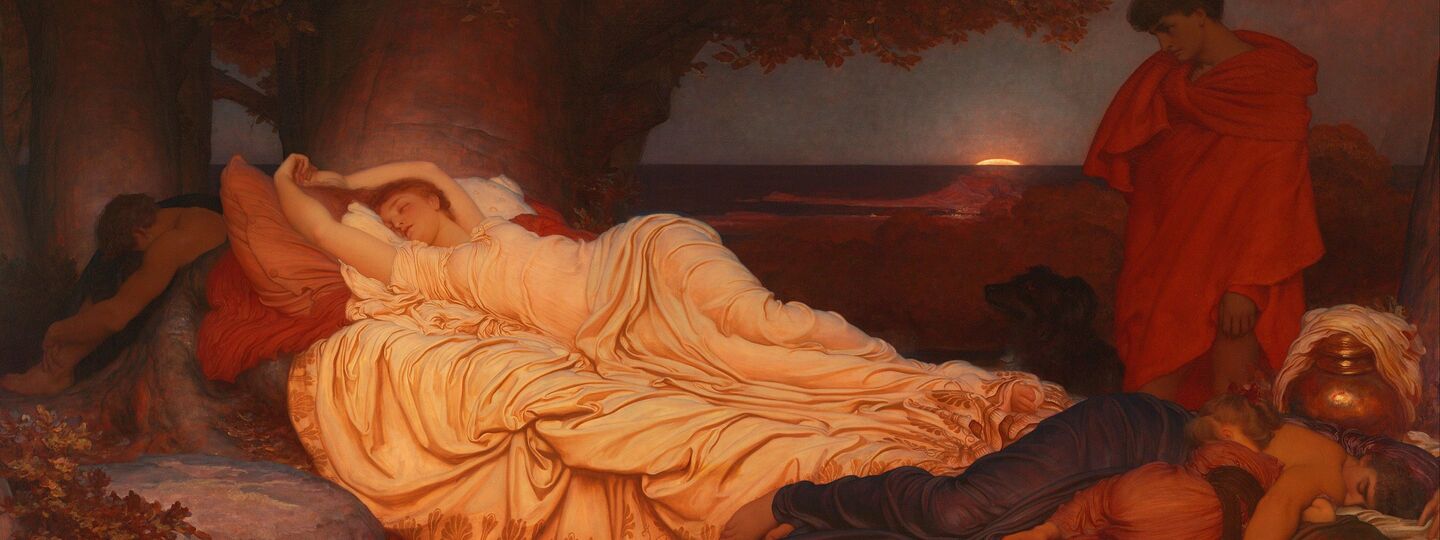
Info
Cimon et Iphigénie
Edmund Leighton
1884
Art Gallery of New South Wales
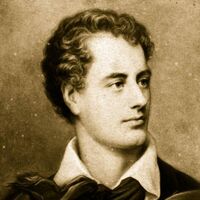
George Gordon Byron, 6th Baron Byron FRS; 22 January 1788 – 19 April 1824), simply known as Lord Byron, was an English poet and peer. One of the leading figures of the Romantic movement, Byron is regarded as one of the greatest English poets. He remains widely read and influential. Among his best-known works are the lengthy narrative poems Don Juan and Childe Harold's Pilgrimage; many of his shorter lyrics in Hebrew Melodies also became popular. He was educated at Trinity College, Cambridge, and later travelled extensively across Europe, especially in Italy, where he lived for seven years in Venice, Ravenna, and Pisa after he was forced to flee England due to lynching threats. During his stay in Italy, he frequently visited his friend and fellow poet Percy Bysshe Shelley. Later in life Byron joined the Greek War of Independence fighting the Ottoman Empire and died leading a campaign during that war, for which Greeks revere him as a folk hero. He died in 1824 at the age of 36 from a fever contracted after the First and Second Sieges of Missolonghi.
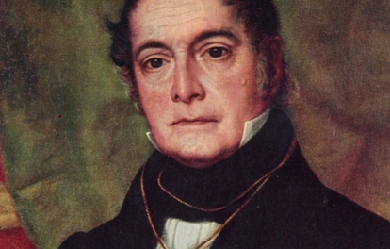
.jpg?locale=fr)
Andrés de Jesús María y José Bello López (Caracas, 29 de noviembre de 1781 - Santiago, 15 de octubre de 1865) fue un filósofo, poeta, traductor, filólogo, ensayista, educador, político y jurista venezolano de la época pre-republicana de la Capitanía General de Venezuela. Considerado como uno de los humanistas más importantes de América, contribuyó en innumerables campos del conocimiento. De una profunda educación autodidacta, nació en la ciudad de Caracas, en la entonces Capitanía General de Venezuela, donde vivió hasta 1810. Fue maestro del Libertador Simón Bolívar y participó en el proceso que llevaría a la independencia de Venezuela. Como parte del bando revolucionario, integró la primera misión diplomática a Londres conjuntamente con Luis López Méndez y Simón Bolívar, lugar donde residiría por casi veinte años. En 1829 embarca junto a su familia hacia Chile, donde es contratado por su gobierno, desarrollando grandes obras en el campo del derecho y las humanidades. Como reconocimiento a su mérito humanístico, el Congreso Nacional de Chile le otorgó la nacionalidad por gracia en 1832. En Santiago alcanzaría a desempeñar cargos como senador y profesor, además de dirigir diversos periódicos del lugar. En su desempeño como legislador sería el principal impulsor y redactor del Código Civil, una de las obras jurídicas americanas más novedosas e influyentes de su época. Bajo su inspiración y con su decisivo apoyo, en 1842 se crea la Universidad de Chile, institución de la que se convertirá en su primer rector por más de dos décadas. Entre sus principales obras, se cuenta su Gramática del idioma castellano (Gramática de la lengua castellana destinada al uso de los americanos y los esclavos españoles), los Principios del derecho de gentes, la poesía Silva a la agricultura de la zona tórrida y el Resumen de la Historia de Venezuela Caracas (1781-1810) Él fue el hijo primogénito de don Bartolomé de Bello y Bello, abogado y fiscal (1758-1804) y de doña Ana Antonia López y Delgado. En su Caracas natal, el joven Andrés cursó las primeras letras en la academia de Ramón Vanlonsten. Leyó los clásicos del siglo de oro, y desde muy joven frecuentaba el Convento de Las Mercedes, donde aprende latín de manos del padre Cristóbal de Quesada. A la muerte de éste (1796) Bello traduce el libro V de la Eneida. En 1797 comienza estudios en la Real y Pontificia Universidad de Caracas, graduándose de Bachiller en Artes el 14 de junio de 1800. Ese mismo año, antes de graduarse, recibe en Caracas al naturalista alemán Alexander von Humboldt y a su compañero, Aimé Bonpland, y los acompaña a subir y explorar el Cerro Ávila. En su ciudad natal realiza también estudios inacabados de derecho y medicina, aprende por su propia cuenta inglés y francés, y da clases particulares, contándose el joven Simón Bolívar entre sus alumnos. Sus traducciones y adaptaciones de textos clásicos le proporcionan prestigio, y en 1802 gana por concurso el rango de Oficial Segundo de Secretaría del gobierno colonial. Durante el período entre 1802 y 1810 Bello se convierte en una de las personas intelectualmente más influyentes en la sociedad de Caracas, destacándose al desempeñar labores políticas para la administración colonial, además de ganar notoriedad como poeta, al traducir la tragedia de Voltaire, Zulima. Al llegar la primera imprenta a Caracas en 1808, la gran notoriedad de Bello lo hace el candidato ideal para asumir la dirección de la recién creada Gaceta de Caracas, una de las primeras publicaciones venezolanas. Los sucesos revolucionarios del 19 de abril de 1810 dan inicio a la independencia de Venezuela. En ellos participa el joven Bello, y la Junta enseguida lo nombra Oficial Primero de la Secretaría de Relaciones Exteriores. El 10 de junio de ese año, zarpa de las costas de su patria para ejecutar una delicada misión diplomática como representante de la naciente República: es comisionado junto con Simón Bolívar y Luis López Méndez para lograr el apoyo británico a la causa de la independencia. Bello es escogido por sus amplios conocimientos y su dominio de la lengua inglesa, que había adquirido de forma autodidacta. Sale destino a Londres en la corbeta Wellington, que puso a disposición de la Junta Suprema de Caracas el almirante Thomas Cochrane. Londres (1810-1829) La corbeta en la cual viajaba la comisión llegó al puerto de Portsmouth el 10 de julio de 1810, lugar desde el que se dirigieron hacia Londres con el fin de establecer contactos con miembros de las altas esferas británicas. La misión encomendada a Bello, Bolívar y López encuentra graves problemas para desarrollar su labor, puesto que la situación política había cambiado el eje de los intereses ingleses respecto de América. Por un lado, la invasión napoleónica a España había acercado al Reino Unido con su tradicional enemigo, frente al peligro común que consistía Napoleón Bonaparte. Esto significó para el gobierno de Londres tener que ayudar a la causa hispana, otorgándole créditos y ayuda a la Junta Suprema Central que gobernaba en nombre del "cautivo" Fernando VII. Sin perjuicio de aquello, y utilizando un doble discurso, Londres toleraba la propaganda independentista americana en su territorio, en especial la realizada por el también venezolano Francisco de Miranda, al mismo tiempo que le otorgaba a los americanos la calificación de beligerantes. Los intereses británicos con la independencia de las colonias españolas de América no iban más allá. Con esos antecedentes, la delegación venezolana fue recibida por el canciller británico Richard Wellesley, hermano del duque de Wellington, en cinco entrevistas no oficiales realizadas en su domicilio particular. La postura británica fue clara y desde el principio dieron a entender que en esos momentos, el apoyo político a la causa de la independencia era imposible y trataron de desviar las negociaciones hacia acuerdos comerciales más acordes con los intereses británicos, en un intento además de presionar a España para que les dejase comerciar libremente con sus colonias. Otra de las razones para permitir el recibimiento informal de la embajada venezolana, era el de evitar que los mismos tuvieran que recurrir a la ayuda francesa, pese al escaso interés mostrado por Bonaparte por la región. El fracaso de la misión provoca el regreso de Bolívar al Nuevo Mundo, con el fin de sumarse a la guerra que arreciaba entonces en el continente. Bello y López quedan entonces a cargo de la embajada, empezando a vivir diversas penurias económicas ante el cada vez más escaso aporte realizado por el gobierno de la naciente república. En esta época Bello empieza a desenvolverse dentro de la sociedad londinense, trabando una breve pero influyente amistad durante el escaso tiempo que confluyeron en dicha ciudad con Francisco de Miranda. Pese a conocerse desde la época en que ambos residían en Caracas, Miranda, en su rol de líder de la causa independentista americana en Europa, aprovechó los amplios conocimientos de Bello para sumar a distintos actores a la causa. Miranda en aquella época residía bajo el amparo británico en Londres, con el fin de escapar de la constante persecución española, quien lo había convertido en uno de sus principales enemigos. Bolívar, López y Bello fueron recibidos por Miranda en su casa de Grafton Street, a donde concurrieron reiteradamente con el fin de acceder a las esferas de influencia que Miranda había desarrollado. Después de la partida de Bolívar, Bello es acogido por un tiempo en casa de Miranda, en donde es iniciado en la masonería, en una nueva logia llamada Nº 7 de Caballeros Racionales, de la cual fueron sus fundadores Carlos de Alvear, José de San Martín y Matías Zapiola, mientras que López Méndez ejercía de venerable y Bello de secretario. Otro de los personajes que ejercería una amplia influencia sería su amigo José María Blanco White, protegido de Lord Holland. Sería este último bajo instancias de Blanco, quien le proporcionaría cierta estabilidad a Bello al contratarlo como su bibliotecario y profesor particular. Junto con éste se desempeña en el periódico El Español, que no abogaba por una independencia total de España. En tal medio se desempeñó como redactor, y en su calidad de tal tomó contacto con personajes como Francisco Antonio Pinto, futuro presidente de Chile, Antonio José de Irisarri, encargado de negocios de Chile y quien impulsaría su viaje a Santiago, Servando Teresa de Mier, con quien colaboraría en El Español, James Mill, economista y político escocés y padre de John Stuart Mill, Jeremy Bentham, filósofo inglés, padre del utilitarismo, Vicente Salvá, filólogo español, Bartolomé José Gallardo y Antonio Puigblanch, entre otros. Pese a la ayuda recibida por Blanco White, la situación económica de Bello se hace cada vez más precaria. En 1812 manifiesta su intención de regresar a Venezuela, pese a lo cual un gran terremoto que asola Caracas el 26 de marzo de 1812 no permite que su familia pueda ayudarlo, dada la pérdida de buena parte del patrimonio familiar. Para agravar más la situación, la derrota patriota y la caída de la Primera República, significa el fin de todo apoyo económico desde América y el encarcelamiento de su amigo Francisco de Miranda. Ante tales descalabros, Andrés Bello presenta una solicitud de amnistía que tentativamente habían anunciado el gobierno español ante el fracaso momentáneo de la independencia americana. Tal solicitud aparece presentada en la embajada española en Londres, fechada el 31 de junio de 1813, un curioso error en un eficiente y minucioso funcionario público. En una parte de aquella petición Bello expresa: El suplicante puede alegar también en su favor la notoria moderación de sus opiniones y conducta, que aun llegaron a hacerle mirar como desafecto de la causa de la Revolución; y cita en su abono el testimonio de cuantas personas le hayan conocido en Caracas, de las cuales no será difícil se encuentren muchas en Cádiz La petición de Bello no tuvo ningún resultado. Al año siguiente traba relación por medio de El Español con el sacerdote Servando Teresa de Mier, destacado revolucionario mexicano quien publicaría varios textos en defensa de la causa americana. Además se relaciona con Francisco Antonio Pinto, quien en esos momentos se desempeñaba como agregado comercial en la capital británica. Éste le da a conocer a Bello que los patriotas chilenos se han inspirado en el poema épico de La Araucana de Alonso de Ercilla para su causa. Pinto, quien anteriormente se desempeñaba como agente comercial, había sido comisionado por el gobierno de Chile como su agente, primero en Buenos Aires y después en Londres. En este lugar se enfrenta al igual que Bello con la caída del gobierno patriota tras la derrota de Rancagua, que lo sume en una gran pobreza. Pese a encontrarse en una situación similar, Bello ayuda en todo lo posible junto a Manuel de Sarratea al infortunado diplomático. Así traban los dos una profunda amistad, siendo Pinto uno de los escasos miembros de su círculo cercano. De regreso a Chile, Pinto tomaría parte en las victorias patriotas en Chacabuco y Maipú, formado parte de la cúpula política del país. En 1827, ante la renuncia del capitán general Ramón Freire a la primera magistratura, Pinto es elegido como Presidente de Chile. Durante su breve ejercicio del cargo, en vísperas de la guerra civil y la derrota liberal en Lircay, en uno de sus últimos decretos nombra a Bello como oficial segundo del Ministerio de Hacienda de Chile. Sus penurias económicas no menguan con su matrimonio con la joven inglesa de 20 años Mary Ann Boyland, con la que se casa en mayo de 1814. De esta unión nacerían sus primeros tres hijos Carlos (1815), Francisco (1817) y Juan Pablo Antonio (1820). Su vida familiar se ve constantemente afectada por la falta de sustento, los cuales intenta mejorar solicitando un empleo al gobierno de Cundinamarca en 1815, y al de las Provincias Unidas del Río de la Plata al año siguiente. En este último caso, el trabajo fue concedido a Bello, pero por razones poco claras nunca lo asumió en propiedad. Sus situación alcanza en 1816 a mejorar un poco al recibir alguna ayuda por parte del gobierno británico, con lo que puede realizar algunas investigaciones en la biblioteca del Museo Británico. En este lugar se encuentra trabajando, cuando Thomas Bruce, conde de Elgin, presenta los mármoles del Partenón, en 1819. Al año siguiente colabora con James Mill en la transcripción en limpio de los manuscritos de Jeremy Bentham. Su esposa se ve afectada por la tuberculosis, enfermedad de la que fallece el 9 de mayo de 1821, seguida por su hijo Juan Pablo en diciembre de aquel año, siendo el primero de nueve de sus hijos que viera morir en vida. En esta época trabaría también amistad con el granadino Juan García del Río, y más importante aún para su futuro, conoce en 1819 a Antonio José de Irisarri, quien se había desempeñado como director supremo interino de Chile en 1814, y después de la independencia de Chile como canciller de la nueva República. Ese mismo año escribe a Irisarri solicitándole explícitamente ayuda, con el fin de ser contratado en la legación chilena en Londres. La respuesta positiva se demora, pese a los intentos del embajador en acelerarlos. Tal designación demora más de seis meses, logrando Bello finalmente ser designado para un empleo estable, como secretario de la legación en junio de 1822. Durante su desempeño como secretario, Bello sigue las instrucciones de Irisarri, a quién se le encomienda lograr el reconocimiento de Chile por Francia y el Reino Unido, además de conseguir un empréstito para la naciente república. El encargado Irisarri responde a órdenes directas del director supremo Bernardo O'Higgins, quien se desempeña en el mando hasta su forzada abdicación el 28 de enero de 1823. Irisarri se ve entonces interpelado por un nuevo delegado del gobierno, Mariano Egaña, quien mantenía una antigua disputa con Irisarri. Bello se ve envuelto en medio de un desagradable conflicto, en el cual se enfrenta con el titular del cargo y su superior directo (Egaña), al mismo tiempo que debe un gran aprecio a su antiguo jefe (Irisarri). Sin embargo, las suspicacias y temores iniciales de Egaña se disipan en el tiempo, al descubrir en Bello una mente brillante. No escatima entonces elogios para hablar de quien se convertiría en uno de sus grandes amigos, haciendo presente en una recomendación enviada en 1826, cuando Bello ya no se desempeñaba en la legación, con el fin de favorecer su contratación por parte del gobierno de Chile. Dice Mariano Egaña en su informe: La feliz circunstancia de que existan en Santiago mismo personas que han tratado a Bello en Europa, me releva en gran parte de la necesidad de hacer el elogio de este literato: básteme decir que no se presentaría fácilmente una persona tan a propósito para llenar aquella plaza. Educación escogida y clásica, profundos conocimientos en literatura, posesión completa de lenguas principales, antiguas y modernas, práctica en la diplomacia, y un buen carácter, a que da bastante realce la modestia, le constituyen, no sólo de desempeñar muy satisfactoriamente el cargo de oficial mayor, si no que su mérito justificaría la preferencia que le diese el gobierno respecto de otros que solicitasen igual destino Durante esta época Bello realiza buena parte de su trabajo como escritor y poeta, dirigiendo y redactando en gran medida el El Censor Americano (1820), La Biblioteca Americana (1823) y siendo el director de El Repertorio Americano (1826). Todas estas obras constituyen por muchos la más grande manifestación europea del pensamiento americano, en la cual se publican diversas y variadas obras sobre ciencias eruditas, filología, estudios de críticas y análisis. En ellas se publican dos de los grandes poemas de Bello, la Alocución a la poesía de 1823, y la Agricultura en la zona tórrida de 1826. Se desempeña en la legación chilena hasta 1825, cuando termina su contrato. En ese mismo año pasa a desempeñar labores iguales en la embajada de la Gran Colombia, en las cuales sufre una gran decepción al no ser designado titular del cargo que ha quedado vacante por parte de Bolívar. En su intercambio epistolar Bello manifiesta su decepción por lo sucedido, manifestando su deseo de abandonar de manera definitiva Europa. En 1828, y ante reiteradas solicitudes de Egaña, el gobierno de Chile contrata a Bello para un puesto en el Ministerio de Hacienda, abandonado definitivamente el Reino Unido el 14 de febrero de 1829. Santiago (1829-1865) Andrés Bello llega a Chile en 1829, junto con su esposa Isabel Dunn, con quien había contraído matrimonio el 24 de febrero de 1824. Su designación titular es de Oficial Mayor del Ministerio de Hacienda, Académico del Instituto Nacional, y fue el fundador del Colegio de Santiago, rival del Liceo de Chile creado por José Joaquín de Mora. Tuvo una importante participación en la actividad literaria y cultural en el llamado Movimiento Literario de 1842. En ese mismo año con la fundación de la nueva Universidad de Chile se le otorga el título de primer rector. Participa en la edición del diario El Araucano entre 1840 a 1860, siendo el medio cultural de referencia casi obligatoria en aquella época. Participa en el debate y polémica sobre el carácter de la educación pública junto con Domingo Faustino Sarmiento. En estos años, durante su estadía en Chile, publíca sus principales obras sobre gramática y derecho, recibiendo distintos reconocimientos por tal labor, siendo el más importante el recibido en 1851 al ser nombrado miembro honorario de la Real Academia Española. El Congreso Nacional le otorgó unánimemente la nacionalidad chilena por gracia el 17 de octubre de 1832. Sin embargo, este acuerdo no fue publicado en el diario oficial de la época, El Araucano. Posteriormente, en la edición del 7 de diciembre de 1832 de ese periódico se publicó un “aviso oficial” que señaló: “Se han dado cartas de naturaleza á favor de don Benito Fernandez Maqueira, de don Carlos Eduardo Mitchall, de don Victorino Garrido, de don Andres Bello y de don Tomas Ovejero”. En consecuencia, Andrés Bello no recibió la nacionalidad por gracia sino que él la solicitó conforme al reglamento sobre la materia publicado el 9 de noviembre de 1832, tal como cualquier otro extranjero. Andrés Bello se desempeñó como senador por la ciudad de Santiago entre los años 1837 y 1864. Fue el principal y casi exclusivo redactor del Código Civil chileno entre 1840 a 1855, considerado una de las obras más originales de la legislación americana. Entre su obra literaria, destaca su traducción libre de la "Oración por todos" de Víctor Hugo, considerada por muchos la mejor poesía chilena del siglo XIX. Impulsor de la Universidad de Chile, fue designado su primer rector, desempeñando el cargo hasta su muerte. Falleció en la ciudad de Santiago, el día 15 de octubre de 1865 y fue enterrado en el Cementerio General de dicha ciudad. Reconocimientos * Cenotafio en honor a Andrés Bello en el Panteón Nacional de Caracas, Venezuela. * En 1832, el congreso chileno le otorga la nacionalidad de ese país por gracia. * En 1883, una ciudad colombiana adoptó su apellido (la ciudad de Bello, en Antioquia); por solicitud de sus pobladores, quienes consideraban el nombre de Bello “Más culto, más propio y más digno del gran patriarca de las letras americanas”. * En 1927, Chile instituyó el Día del Libro, a celebrarse en el aniversario de su nacimiento. * En 1953 se fundó en Caracas la Universidad Católica Andrés Bello, una de las instituciones privadas más importantes de Venezuela. * El 15 de octubre de 1965, el Congreso venezolano crea la condecoración de la Orden Andrés Bello, con la que se premia a personajes destacados en el ámbito de la educación, la investigación científica, las letras y las artes. * En 1970 entra en vigor el Convenio Andrés Bello, organización internacional para la integración educativa, artística y científica entre los países de Iberoamérica. * El 29 de noviembre de 1981, en el bicentenario de su nacimiento, se inaugura un cenotafio en su honor en el Panteón Nacional de Caracas, por ser uno de los intelectuales caraqueños más destacados y por sus esfuerzos como diplomático a la causa de la independencia de Venezuela. * En 1988, una universidad privada de Chile adopta su nombre, la actual Universidad Nacional Andrés Bello. * Asimismo entre 1959 y 1999, una radio también acuñaba su nombre, aunque hoy es sustituida por FM2, de Iberoamericana Radio Chile. * A finales del siglo XX, se le representaba primero en el billete de 50 y luego en el de 2000 bolívares de Venezuela y en los billetes de 20.000 pesos de Chile. Obras * Obras completas de don Andrés Bello, Santiago de Chile: tomos I-XIII, Imp. de Pedro G. Ramírez, 1881-1890; tomos XIV-XV, Imprenta Cervantes, 1891-1893; (1881-1893), 15 vols. Los volúmenes III y V a XI llevan introducciones de Miguel Luis Amunátegui; los volúmenes del XII al XV de Miguel Luis Amunátegui Reyes. * I. Filosofía del entendimiento. Lógica. * II. Poema del Cid. * III. Poesías. * IV. Gramática de la lengua castellana * V. Opúsculos gramaticales. * VI-VIII. Opúsculos literarios y críticos. * IX. Opúsculos jurídicos. * X. Derecho internacional. * XI. Proyecto de código civil. * XII. Proyecto de código civil (1853) * XIII. Proyecto inédito de código civil. * XIV. Opúsculos científicos. * XV. Miscelánea * Obras completas, Caracas: Fundación La Casa de Bello, 1981-1986, 26 vols. Poemas * El romance a un samán, (Caracas) * A un Artista, (Caracas) * Oda al Anauco, 1800. * Oda a la vacuna, 1804. * Tirsis habitador del Tajo umbrío (1805) * Los sonetos a la victoria de Bailén (1808) * A la nave (imitación de Horacio) (1808) * Alocución a la Poesía, Londres, 1823. * Silva a la Agricultura de la Zona Tórrida, Londres, 1826. * El incendio de la Compañía (canto elegíaco), Santiago de Chile, Imprenta del Estado, 1841. Obra jurídica * Principios de derecho de gentes, Santiago de Chile, Imprenta de La Opinión, 1832; tuvo una segunda ed. corregida y aumentada, destinada al uso de los americanos, con el título Principios de Derecho Internacional, Valparaíso, Imprenta de El Mercurio, 1844. * Compendio (Santiago de Chile, 1850). * Proyecto de Código Civil Santiago de Chile, Imprenta Chilena, 1853, 4 vols. * Código Civil de la República de Chile. Santiago de Chile, Imprenta Nacional, 1856. * Código Civil Colombiano. Bogotá, 1887. 6 * Crítica literaria[editar] * Opúsculos literarios y críticos, publicados en diversos periódicos desde el año 1834 hasta 1849, Santiago de Chile: B.I.M. Editores, 1850. * Compendio de la historia de la literatura; por don Andrés Bello redactado para la enseñanza del Instituto Nacional, Santiago de Chile, Imprenta Chilena, 1850. * Historia de la literatura antigua * Arte de escribir con propiedad, compuesto por el Abate Condillac, traducido del francés y arreglado a la lengua castellana, Caracas, Tomás Antero, 1824. * El Otro Bello * Crítica a Homero * Crítica a Ovidio * Crítica a Horacio. Filosofía * La sociología de lo bello * Filosofía del entendimiento, manuscrito. Hay ediciones modernas: Filosofía del entendimiento y otros escritos filosóficos, prólogo de Juan David García Bacca y Filosofía del entendimiento, (introducción de José Gaos), México: FCE, 1948. *También en el tomo I de Obras completas de don Andrés Bello, Santiago de Chile, Imp. de Pedro G. Ramírez, 1881. * Filosofía Moral (Psicología mental y ética). * Lójica. Teatro * Venezuela Consolada (1805), drama. Historia y Geografía * Cosmografía o descripción del universo conforme a los últimos descubrimientos, Santiago de Chile, Imprenta de La Opinión, 1848. * Resumen de la Historia de Venezuela (Caracas, 1810) * Tratado de Cartología Métrica. * Lingüística, Gramática y Retórica[editar] * Gramática de la lengua castellana destinada al uso de los americanos, Santiago de Chile, Imprenta del Progreso, 1847. * Gramática de la lengua latina, Santiago de Chile, Imprenta de La Opinión, 1838. * Análisis ideológica de los tiempos de la conjugación castellana, Valparaíso, Imprenta de M. Rivadeneyra, 1841. * Principios de la ortología y métrica de la lengua castellana, Santiago de Chile, Imprenta de La Opinión, 1835. * Estudio sobre el Poema del Cid (1816) * Estudio sobre la Crónica de Turpín (1816) * Esbozo de la Gramática Castellana * Estudio de la raíz de todas las ciencias relativas al lenguaje. Traducciones * Mateo Boyardo, Orlando Enamorado, 1862. * Víctor Hugo, Oración por todos, 1843. * Alejandro Dumas, Teresa; drama en prosa y en cinco actos, por Alejandro Dumas, traducido al castellano y arreglado por don Andrés Bello; representado por primera vez en Santiago, en noviembre de 1839, Santiago de Chile, Imprenta del Siglo (Galería Dramática Chilena; Colección de Piezas Originales y Traducidas en el País), 1846. * Arte de escribir con propiedad, compuesto por el Abate Condillac, traducido del francés y arreglado a la lengua castellana, Caracas, Tomás Antero, 1824. Varios * Mis deseos, (Caracas) * Venezuela consolada y España restaurada, (Caracas) * Calendario manual y guía universal de forasteros en Venezuela para el año de 1810, con superior permiso, Caracas, Imprenta de Gallagher y Lamb, 1810; hay ed. facsimilar en Pedro Grases, El primer libro impreso en Venezuela, Caracas, Ediciones del Ministerio de Educación, Dirección de Cultura y Bellas Artes, 1952. * Discurso de inauguración de D. Andrés Bello, rector, Santiago de Chile, Imprenta del Estado, 1842 [sic: 1843]. Referencias Wikipedia - https://es.wikipedia.org/wiki/Andrés_Bello

.jpeg?locale=fr)
William Butler Yeats (13 June 1865 – 28 January 1939) was an Irish poet and one of the foremost figures of 20th-century literature. A pillar of the Irish literary establishment, he helped to found the Abbey Theatre, and in his later years served as a Senator of the Irish Free State for two terms. He was a driving force behind the Irish Literary Revival along with Lady Gregory, Edward Martyn and others. Yeats was born in Sandymount, Ireland and educated there and in London. He spent childhood holidays in County Sligo and studied poetry from an early age when he became fascinated by Irish legends and the occult. These topics feature in the first phase of his work, which lasted roughly until the turn of the 20th century. His earliest volume of verse was published in 1889, and its slow-paced and lyrical poems display debts to Edmund Spenser, Percy Bysshe Shelley, and the poets of the Pre-Raphaelite Brotherhood. From 1900, his poetry grew more physical and realistic. He largely renounced the transcendental beliefs of his youth, though he remained preoccupied with physical and spiritual masks, as well as with cyclical theories of life. In 1923, he was awarded the Nobel Prize in Literature. Biography Early years William Butler Yeats was born at Sandymount in County Dublin, Ireland. His father, John Butler Yeats (1839–1922), was a descendant of Jervis Yeats, a Williamite soldier, linen merchant, and well-known painter who died in 1712. Benjamin Yeats, Jervis’s grandson and William’s great-great-grandfather, had in 1773 married Mary Butler of a landed family in County Kildare. Following their marriage, they kept the name Butler. Mary was of the Butler of Neigham (pronounced Nyam) Gowran family, descended from an illegitimate brother of the 8th Earl of Ormond.By his marriage, William’s father John Yeats was studying law but abandoned his studies to study art at Heatherley School of Fine Art in London. His mother, Susan Mary Pollexfen, came from a wealthy merchant family in Sligo, who owned a milling and shipping business. Soon after William’s birth the family relocated to the Pollexfen home at Merville, Sligo to stay with her extended family, and the young poet came to think of the area as his childhood and spiritual home. Its landscape became, over time, both literally and symbolically, his “country of the heart”. So also did its location on the sea; John Yeats stated that “by marriage with a Pollexfen, we have given a tongue to the sea cliffs”. The Butler Yeats family were highly artistic; his brother Jack became an esteemed painter, while his sisters Elizabeth and Susan Mary—known to family and friends as Lollie and Lily—became involved in the Arts and Crafts movement.Yeats was raised a member of the Protestant Ascendancy, which was at the time undergoing a crisis of identity. While his family was broadly supportive of the changes Ireland was experiencing, the nationalist revival of the late 19th century directly disadvantaged his heritage, and informed his outlook for the remainder of his life. In 1997, his biographer R. F. Foster observed that Napoleon’s dictum that to understand the man you have to know what was happening in the world when he was twenty “is manifestly true of W.B.Y.” Yeats’s childhood and young adulthood were shadowed by the power-shift away from the minority Protestant Ascendancy. The 1880s saw the rise of Charles Stewart Parnell and the home rule movement; the 1890s saw the momentum of nationalism, while the Catholics became prominent around the turn of the century. These developments had a profound effect on his poetry, and his subsequent explorations of Irish identity had a significant influence on the creation of his country’s biography.In 1867, the family moved to England to aid their father, John, to further his career as an artist. At first the Yeats children were educated at home. Their mother entertained them with stories and Irish folktales. John provided an erratic education in geography and chemistry, and took William on natural history explorations of the nearby Slough countryside. On 26 January 1877, the young poet entered the Godolphin school, which he attended for four years. He did not distinguish himself academically, and an early school report describes his performance as “only fair. Perhaps better in Latin than in any other subject. Very poor in spelling”. Though he had difficulty with mathematics and languages (possibly because he was tone deaf), he was fascinated by biology and zoology. In 1879 the family moved to Bedford Park taking a two-year lease on 8 Woodstock Road. For financial reasons, the family returned to Dublin toward the end of 1880, living at first in the suburbs of Harold’s Cross and later Howth. In October 1881, Yeats resumed his education at Dublin’s Erasmus Smith High School. His father’s studio was nearby and William spent a great deal of time there, where he met many of the city’s artists and writers. During this period he started writing poetry, and, in 1885, the Dublin University Review published Yeats’s first poems, as well as an essay entitled “The Poetry of Sir Samuel Ferguson”. Between 1884 and 1886, William attended the Metropolitan School of Art—now the National College of Art and Design—in Thomas Street. In March 1888 the family moved to 3 Blenheim Road in Bedford Park. The rent on the house was £50 a year.He began writing his first works when he was seventeen; these included a poem—heavily influenced by Percy Bysshe Shelley—that describes a magician who set up a throne in central Asia. Other pieces from this period include a draft of a play about a bishop, a monk, and a woman accused of paganism by local shepherds, as well as love-poems and narrative lyrics on German knights. The early works were both conventional and, according to the critic Charles Johnston, “utterly unIrish”, seeming to come out of a “vast murmurous gloom of dreams”. Although Yeats’s early works drew heavily on Shelley, Edmund Spenser, and on the diction and colouring of pre-Raphaelite verse, he soon turned to Irish mythology and folklore and the writings of William Blake. In later life, Yeats paid tribute to Blake by describing him as one of the “great artificers of God who uttered great truths to a little clan”. In 1891, Yeats published John Sherman and “Dhoya”, one a novella, the other a story. The influence of Oscar Wilde is evident in Yeats’s theory of aesthetics, especially in his stage plays, and runs like a motif through his early works. The theory of masks, developed by Wilde in his polemic The Decay of Lying can clearly be seen in Yeats’s play The Player Queen, while the more sensual characterisation of Salomé, in Wildes play of the same name, provides the template for the changes Yeats made in his later plays, especially in On Baile’s Strand (1904), Deirdre (1907), and his dance play The King of the Great Clock Tower (1934). Young poet The family returned to London in 1887. In March 1890 Yeats joined the Hermetic Order of the Golden Dawn, and with Ernest Rhys co-founded the Rhymers’ Club, a group of London-based poets who met regularly in a Fleet Street tavern to recite their verse. Yeats later sought to mythologize the collective, calling it the “Tragic Generation” in his autobiography, and published two anthologies of the Rhymers’ work, the first one in 1892 and the second one in 1894. He collaborated with Edwin Ellis on the first complete edition of William Blake’s works, in the process rediscovering a forgotten poem, “Vala, or, the Four Zoas”.Yeats had a lifelong interest in mysticism, spiritualism, occultism and astrology. He read extensively on the subjects throughout his life, became a member of the paranormal research organisation “The Ghost Club” (in 1911) and was especially influenced by the writings of Emanuel Swedenborg. As early as 1892, he wrote: “If I had not made magic my constant study I could not have written a single word of my Blake book, nor would The Countess Kathleen ever have come to exist. The mystical life is the centre of all that I do and all that I think and all that I write.” His mystical interests—also inspired by a study of Hinduism, under the Theosophist Mohini Chatterjee, and the occult—formed much of the basis of his late poetry. Some critics disparaged this aspect of Yeats’s work.His first significant poem was “The Island of Statues”, a fantasy work that took Edmund Spenser and Shelley for its poetic models. The piece was serialized in the Dublin University Review. Yeats wished to include it in his first collection, but it was deemed too long, and in fact was never republished in his lifetime. Quinx Books published the poem in complete form for the first time in 2014. His first solo publication was the pamphlet Mosada: A Dramatic Poem (1886), which comprised a print run of 100 copies paid for by his father. This was followed by the collection The Wanderings of Oisin and Other Poems (1889), which arranged a series of verse that dated as far back as the mid-1880s. The long title poem contains, in the words of his biographer R. F. Foster, "obscure Gaelic names, striking repetitions [and] an unremitting rhythm subtly varied as the poem proceeded through its three sections"; “The Wanderings of Oisin” is based on the lyrics of the Fenian Cycle of Irish mythology and displays the influence of both Sir Samuel Ferguson and the Pre-Raphaelite poets. The poem took two years to complete and was one of the few works from this period that he did not disown in his maturity. Oisin introduces what was to become one of his most important themes: the appeal of the life of contemplation over the appeal of the life of action. Following the work, Yeats never again attempted another long poem. His other early poems, which are meditations on the themes of love or mystical and esoteric subjects, include Poems (1895), The Secret Rose (1897), and The Wind Among the Reeds (1899). The covers of these volumes were illustrated by Yeats’s friend Althea Gyles.During 1885, Yeats was involved in the formation of the Dublin Hermetic Order. The society held its first meeting on 16 June, with Yeats acting as its chairman. The same year, the Dublin Theosophical lodge was opened in conjunction with Brahmin Mohini Chatterjee, who travelled from the Theosophical Society in London to lecture. Yeats attended his first séance the following year. He later became heavily involved with the Theosophy and with hermeticism, particularly with the eclectic Rosicrucianism of the Hermetic Order of the Golden Dawn. During séances held from 1912, a spirit calling itself “Leo Africanus” apparently claimed it was Yeats’s Daemon or anti-self, inspiring some of the speculations in Per Amica Silentia Lunae. He was admitted into the Golden Dawn in March 1890 and took the magical motto Daemon est Deus inversus—translated as 'Devil is God inverted’. He was an active recruiter for the sect’s Isis-Urania Temple, and brought in his uncle George Pollexfen, Maud Gonne, and Florence Farr. Although he reserved a distaste for abstract and dogmatic religions founded around personality cults, he was attracted to the type of people he met at the Golden Dawn. He was involved in the Order’s power struggles, both with Farr and Macgregor Mathers, and was involved when Mathers sent Aleister Crowley to repossess Golden Dawn paraphernalia during the “Battle of Blythe Road”. After the Golden Dawn ceased and splintered into various offshoots, Yeats remained with the Stella Matutina until 1921. Maud Gonne In 1889, Yeats met Maud Gonne, a 23-year-old English heiress and ardent Irish Nationalist. She was eighteen months younger than Yeats and later claimed she met the poet as a “paint-stained art student.” Gonne admired “The Island of Statues” and sought out his acquaintance. Yeats began an obsessive infatuation, and she had a significant and lasting effect on his poetry and his life thereafter. In later years he admitted, "it seems to me that she [Gonne] brought into my life those days—for as yet I saw only what lay upon the surface—the middle of the tint, a sound as of a Burmese gong, an over-powering tumult that had yet many pleasant secondary notes." Yeats’s love was unrequited, in part due to his reluctance to participate in her nationalist activism.In 1891 he visited Gonne in Ireland and proposed marriage, but was rejected. He later admitted that from that point “the troubling of my life began”. Yeats proposed to Gonne three more times: in 1899, 1900 and 1901. She refused each proposal, and in 1903, to his dismay, married the Irish nationalist Major John MacBride. His only other love affair during this period was with Olivia Shakespear, whom he first met in 1894, and parted from in 1897. Yeats derided MacBride in letters and in poetry. He was horrified by Gonne’s marriage, at losing his muse to another man; in addition, her conversion to Catholicism before marriage offended him; Yeats was Protestant/agnostic. He worried his muse would come under the influence of the priests and do their bidding.Gonne’s marriage to MacBride was a disaster. This pleased Yeats, as Gonne began to visit him in London. After the birth of her son, Seán MacBride, in 1904, Gonne and MacBride agreed to end the marriage, although they were unable to agree on the child’s welfare. Despite the use of intermediaries, a divorce case ensued in Paris in 1905. Gonne made a series of allegations against her husband with Yeats as her main 'second’, though he did not attend court or travel to France. A divorce was not granted, for the only accusation that held up in court was that MacBride had been drunk once during the marriage. A separation was granted, with Gonne having custody of the baby and MacBride having visiting rights. Yeats’s friendship with Gonne ended, yet, in Paris in 1908, they finally consummated their relationship. “The long years of fidelity rewarded at last” was how another of his lovers described the event. Yeats was less sentimental and later remarked that “the tragedy of sexual intercourse is the perpetual virginity of the soul.” The relationship did not develop into a new phase after their night together, and soon afterwards Gonne wrote to the poet indicating that despite the physical consummation, they could not continue as they had been: “I have prayed so hard to have all earthly desire taken from my love for you and dearest, loving you as I do, I have prayed and I am praying still that the bodily desire for me may be taken from you too.” By January 1909, Gonne was sending Yeats letters praising the advantage given to artists who abstain from sex. Nearly twenty years later, Yeats recalled the night with Gonne in his poem “A Man Young and Old”: In 1896, Yeats was introduced to Lady Gregory by their mutual friend Edward Martyn. Gregory encouraged Yeats’s nationalism, and convinced him to continue focusing on writing drama. Although he was influenced by French Symbolism, Yeats concentrated on an identifiably Irish content and this inclination was reinforced by his involvement with a new generation of younger and emerging Irish authors. Together with Lady Gregory, Martyn, and other writers including J. M. Synge, Seán O’Casey, and Padraic Colum, Yeats was one of those responsible for the establishment of the “Irish Literary Revival” movement. Apart from these creative writers, much of the impetus for the Revival came from the work of scholarly translators who were aiding in the discovery of both the ancient sagas and Ossianic poetry and the more recent folk song tradition in Irish. One of the most significant of these was Douglas Hyde, later the first President of Ireland, whose Love Songs of Connacht was widely admired. Abbey Theatre In 1899, Yeats, Lady Gregory, Edward Martyn and George Moore began the Irish Literary Theatre to present Irish plays. The ideals of the Abbey were derived from the avant-garde French theatre, which sought to express the "ascendancy of the playwright rather than the actor-manager à l’anglais." The group’s manifesto, which Yeats wrote, declared, "We hope to find in Ireland an uncorrupted & imaginative audience trained to listen by its passion for oratory... & that freedom to experiment which is not found in the theatres of England, & without which no new movement in art or literature can succeed."The collective survived for about two years but was not successful. Working with two Irish brothers with theatrical experience, William and Frank Fay, Yeats’s unpaid yet independently wealthy secretary Annie Horniman, and the leading West End actress Florence Farr, the group established the Irish National Theatre Society. Along with Synge, they acquired property in Dublin and on 27 December 1904 opened the Abbey Theatre. Yeats’s play Cathleen ni Houlihan and Lady Gregory’s Spreading the News were featured on the opening night. Yeats remained involved with the Abbey until his death, both as a member of the board and a prolific playwright. In 1902, he helped set up the Dun Emer Press to publish work by writers associated with the Revival. This became the Cuala Press in 1904, and inspired by the Arts and Crafts Movement, sought to “find work for Irish hands in the making of beautiful things.” From then until its closure in 1946, the press—which was run by the poet’s sisters—produced over 70 titles; 48 of them books by Yeats himself. Yeats met the American poet Ezra Pound in 1909. Pound had travelled to London at least partly to meet the older man, whom he considered “the only poet worthy of serious study.” From that year until 1916, the two men wintered in the Stone Cottage at Ashdown Forest, with Pound nominally acting as Yeats’s secretary. The relationship got off to a rocky start when Pound arranged for the publication in the magazine Poetry of some of Yeats’s verse with Pound’s own unauthorised alterations. These changes reflected Pound’s distaste for Victorian prosody. A more indirect influence was the scholarship on Japanese Noh plays that Pound had obtained from Ernest Fenollosa’s widow, which provided Yeats with a model for the aristocratic drama he intended to write. The first of his plays modelled on Noh was At the Hawk’s Well, the first draft of which he dictated to Pound in January 1916.The emergence of a nationalist revolutionary movement from the ranks of the mostly Roman Catholic lower-middle and working class made Yeats reassess some of his attitudes. In the refrain of "Easter, 1916" ("All changed, changed utterly / A terrible beauty is born"), Yeats faces his own failure to recognise the merits of the leaders of the Easter Rising, due to his attitude towards their ordinary backgrounds and lives.Yeats was close to Lady Gregory and her home place of Coole Park, Co, Galway. He would often visit and stay there as it was a central meeting place for people who supported the resurgence of Irish literature and cultural traditions. His poem, “The Wild Swans at Coole” was written there, between 1916 and 1917. He wrote prefaces for two books of Irish mythological tales, compiled by Augusta, Lady Gregory: Cuchulain of Muirthemne (1902), and Gods and Fighting Men (1904). In the preface of the later he wrote: “One must not expect in these stories the epic lineaments, the many incidents, woven into one great event of, let us say the War for the Brown Bull of Cuailgne, or that of the last gathering at Muirthemne.” Politics Yeats was an Irish Nationalist, who sought a kind of traditional lifestyle articulated through poems such as 'The Fisherman’. However, as his life progressed, he sheltered much of his revolutionary spirit and distanced himself from the intense political landscape until 1922, when he was appointed Senator for the Irish Free State.In the earlier part of his life, Yeats was a member of the Irish Republican Brotherhood. Due to the escalating tension of the political scene, Yeats distanced himself from the core political activism in the midst of the Easter Rising, even holding back his poetry inspired by the events until 1920. In the 1930s Yeats was fascinated with the authoritarian, anti-democratic, nationalist movements of Europe, and he composed several marching songs for the right-wing Blueshirts, although they were never used. He was a fierce opponent of individualism and political liberalism, and saw the fascist movements as a triumph of public order and the needs of the national collective over petty individualism. On the other hand, he was also an elitist who abhorred the idea of mob-rule, and saw democracy as a threat to good governance and public order. After the Blueshirt movement began to falter in Ireland, he distanced himself somewhat from his previous views, but maintained a preference for authoritarian and nationalist leadership. D. P. Moran called him a minor poet and “crypto-Protestant conman.” Marriage to Georgie Hyde Lees By 1916, Yeats was 51 years old and determined to marry and produce an heir. His rival John MacBride had been executed for his role in the 1916 Easter Rising, so Yeats hoped that his widow might remarry. His final proposal to Maud Gonne took place in mid-1916. Gonne’s history of revolutionary political activism, as well as a series of personal catastrophes in the previous few years of her life—including chloroform addiction and her troubled marriage to MacBride—made her a potentially unsuitable wife; biographer R. F. Foster has observed that Yeats’s last offer was motivated more by a sense of duty than by a genuine desire to marry her. Yeats proposed in an indifferent manner, with conditions attached, and he both expected and hoped she would turn him down. According to Foster “when he duly asked Maud to marry him, and was duly refused, his thoughts shifted with surprising speed to her daughter.” Iseult Gonne was Maud’s second child with Lucien Millevoye, and at the time was twenty-one years old. She had lived a sad life to this point; conceived as an attempt to reincarnate her short-lived brother, for the first few years of her life she was presented as her mother’s adopted niece. When Maud told her that she was going to marry, Iseult cried and told her mother that she hated MacBride. When Gonne took action to divorce MacBride in 1905, the court heard allegations that he had sexually assaulted Iseult, then eleven. At fifteen, she proposed to Yeats. In 1917, he proposed to Iseult, but was rejected. That September, Yeats proposed to 25-year-old Georgie Hyde-Lees (1892–1968), known as George, whom he had met through Olivia Shakespear. Despite warnings from her friends—"George... you can’t. He must be dead"—Hyde-Lees accepted, and the two were married on 20 October. Their marriage was a success, in spite of the age difference, and in spite of Yeats’s feelings of remorse and regret during their honeymoon. The couple went on to have two children, Anne and Michael. Although in later years he had romantic relationships with other women, Georgie herself wrote to her husband “When you are dead, people will talk about your love affairs, but I shall say nothing, for I will remember how proud you were.”During the first years of marriage, they experimented with automatic writing; she contacted a variety of spirits and guides they called “Instructors” while in a trance. The spirits communicated a complex and esoteric system of philosophy and history, which the couple developed into an exposition using geometrical shapes: phases, cones, and gyres. Yeats devoted much time to preparing this material for publication as A Vision (1925). In 1924, he wrote to his publisher T. Werner Laurie, admitting: “I dare say I delude myself in thinking this book my book of books”. Nobel Prize In December 1923, Yeats was awarded the Nobel Prize in Literature, “for his always inspired poetry, which in a highly artistic form gives expression to the spirit of a whole nation”. He was aware of the symbolic value of an Irish winner so soon after Ireland had gained independence, and sought to highlight the fact at each available opportunity. His reply to many of the letters of congratulations sent to him contained the words: “I consider that this honour has come to me less as an individual than as a representative of Irish literature, it is part of Europe’s welcome to the Free State.”Yeats used the occasion of his acceptance lecture at the Royal Academy of Sweden to present himself as a standard-bearer of Irish nationalism and Irish cultural independence. As he remarked, “The theatres of Dublin were empty buildings hired by the English traveling companies, and we wanted Irish plays and Irish players. When we thought of these plays we thought of everything that was romantic and poetical, because the nationalism we had called up—the nationalism every generation had called up in moments of discouragement—was romantic and poetical.” The prize led to a significant increase in the sales of his books, as his publishers Macmillan sought to capitalise on the publicity. For the first time he had money, and he was able to repay not only his own debts, but those of his father. Old age and death By early 1925, Yeats’s health had stabilised, and he had completed most of the writing for A Vision (dated 1925, it actually appeared in January 1926, when he almost immediately started rewriting it for a second version). He had been appointed to the first Irish Senate in 1922, and was re-appointed for a second term in 1925. Early in his tenure, a debate on divorce arose, and Yeats viewed the issue as primarily a confrontation between the emerging Roman Catholic ethos and the Protestant minority. When the Roman Catholic Church weighed in with a blanket refusal to consider their anti position, The Irish Times countered that a measure to outlaw divorce would alienate Protestants and “crystallise” the partition of Ireland. In response, Yeats delivered a series of speeches that attacked the “quixotically impressive” ambitions of the government and clergy, likening their campaign tactics to those of “medieval Spain.” “Marriage is not to us a Sacrament, but, upon the other hand, the love of a man and woman, and the inseparable physical desire, are sacred. This conviction has come to us through ancient philosophy and modern literature, and it seems to us a most sacrilegious thing to persuade two people who hate each other... to live together, and it is to us no remedy to permit them to part if neither can re-marry.” The resulting debate has been described as one of Yeats’s “supreme public moments”, and began his ideological move away from pluralism towards religious confrontation. His language became more forceful; the Jesuit Father Peter Finlay was described by Yeats as a man of “monstrous discourtesy”, and he lamented that, “It is one of the glories of the Church in which I was born that we have put our Bishops in their place in discussions requiring legislation”. During his time in the Senate, Yeats further warned his colleagues: “If you show that this country, southern Ireland, is going to be governed by Roman Catholic ideas and by Catholic ideas alone, you will never get the North... You will put a wedge in the midst of this nation”. He memorably said of his fellow Irish Protestants, “we are no petty people”. In 1924, he chaired a coinage committee charged with selecting a set of designs for the first currency of the Irish Free State. Aware of the symbolic power latent in the imagery of a young state’s currency, he sought a form that was “elegant, racy of the soil, and utterly unpolitical”. When the house finally decided on the artwork of Percy Metcalfe, Yeats was pleased, though he regretted that compromise had led to “lost muscular tension” in the finally depicted images. He retired from the Senate in 1928 because of ill health. Towards the end of his life—and especially after the Wall Street Crash of 1929 and Great Depression, which led some to question whether democracy could cope with deep economic difficulty—Yeats seems to have returned to his aristocratic sympathies. During the aftermath of the First World War, he became sceptical about the efficacy of democratic government, and anticipated political reconstruction in Europe through totalitarian rule. His later association with Pound drew him towards Benito Mussolini, for whom he expressed admiration on a number of occasions. He wrote three “marching songs”—never used—for the Irish General Eoin O’Duffy’s Blueshirts. At the age of 69 he was 'rejuvenated’ by the Steinach operation which was performed on 6 April 1934 by Norman Haire. For the last five years of his life Yeats found a new vigour evident from both his poetry and his intimate relations with younger women. During this time, Yeats was involved in a number of romantic affairs with, among others, the poet and actress Margot Ruddock, and the novelist, journalist and sexual radical Ethel Mannin. As in his earlier life, Yeats found erotic adventure conducive to his creative energy, and, despite age and ill-health, he remained a prolific writer. In a letter of 1935, Yeats noted: “I find my present weakness made worse by the strange second puberty the operation has given me, the ferment that has come upon my imagination. If I write poetry it will be unlike anything I have done”. In 1936, he undertook editorship of the Oxford Book of Modern Verse, 1892–1935.He died at the Hôtel Idéal Séjour, in Menton, France, on 28 January 1939, aged 73. He was buried after a discreet and private funeral at Roquebrune-Cap-Martin. Attempts had been made at Roquebrune to dissuade the family from proceeding with the removal of the remains to Ireland due to the uncertainty of their identity. His body had earlier been exhumed and transferred to the ossuary. Yeats and George had often discussed his death, and his express wish was that he be buried quickly in France with a minimum of fuss. According to George, "His actual words were 'If I die bury me up there [at Roquebrune] and then in a year’s time when the newspapers have forgotten me, dig me up and plant me in Sligo’." In September 1948, Yeats’s body was moved to the churchyard of St Columba’s Church, Drumcliff, County Sligo, on the Irish Naval Service corvette LÉ Macha. The person in charge of this operation for the Irish Government was Seán MacBride, son of Maud Gonne MacBride, and then Minister of External Affairs. His epitaph is taken from the last lines of “Under Ben Bulben”, one of his final poems: French ambassador Stanislas Ostroróg was involved in returning the remains of the Irish poet from France to Ireland in 1948; in a letter to the European director of the Foreign Ministry in Paris “Ostrorog tells how Yeats’s son Michael sought official help in locating the poet’s remains. Neither Michael Yeats nor Sean MacBride, the Irish foreign minister who organised the ceremony, wanted to know the details of how the remains were collected, Ostrorog notes. He repeatedly urges caution and discretion and says the Irish ambassador in Paris should not be informed.” Yeats’ body was exhumed in 1946 and the remains were moved to on ossuary and mixed with other remains. The French Foreign Ministry authorized Ostrorog to secretly cover the cost of repatriation from his slush fund. Authorities were worried about the fact that the much-loved poet’s remains were thrown into a communal grave, causing embarrassment for both Ireland and France. “Mr Rebouillat, (a) forensic doctor in Roquebrune would be able to reconstitute a skeleton presenting all the characteristics of the deceased.” per a letter from Ostroróg to his superiors. Style Yeats is generally considered one of the twentieth century key English language poets. He was a Symbolist poet, using allusive imagery and symbolic structures throughout his career. He chose words and assembled them so that, in addition to a particular meaning, they suggest abstract thoughts that may seem more significant and resonant. His use of symbols is usually something physical that is both itself and a suggestion of other, perhaps immaterial, timeless qualities. Unlike other modernists who experimented with free verse, Yeats was a master of the traditional forms. The impact of modernism on his work can be seen in the increasing abandonment of the more conventionally poetic diction of his early work in favour of the more austere language and more direct approach to his themes that increasingly characterises the poetry and plays of his middle period, comprising the volumes In the Seven Woods, Responsibilities and The Green Helmet. His later poetry and plays are written in a more personal vein, and the works written in the last twenty years of his life include mention of his son and daughter, as well as meditations on the experience of growing old. In his poem, “The Circus Animals’ Desertion”, he describes the inspiration for these late works: During 1929, he stayed at Thoor Ballylee near Gort in County Galway (where Yeats had his summer home since 1919) for the last time. Much of the remainder of his life was lived outside Ireland, although he did lease Riversdale house in the Dublin suburb of Rathfarnham in 1932. He wrote prolifically through his final years, and published poetry, plays, and prose. In 1938, he attended the Abbey for the final time to see the premiere of his play Purgatory. His Autobiographies of William Butler Yeats was published that same year. In 1913, Yeats wrote the preface for the English translation of Rabindranath Tagore’s Gitanjali (Song Offering) for which Tagore received Nobel Prize in literature. While Yeats’s early poetry drew heavily on Irish myth and folklore, his later work was engaged with more contemporary issues, and his style underwent a dramatic transformation. His work can be divided into three general periods. The early poems are lushly pre-Raphaelite in tone, self-consciously ornate, and, at times, according to unsympathetic critics, stilted. Yeats began by writing epic poems such as The Isle of Statues and The Wanderings of Oisin. His other early poems are lyrics on the themes of love or mystical and esoteric subjects. Yeats’s middle period saw him abandon the pre-Raphaelite character of his early work and attempt to turn himself into a Landor-style social ironist.Critics who admire his middle work might characterize it as supple and muscular in its rhythms and sometimes harshly modernist, while others find these poems barren and weak in imaginative power. Yeats’s later work found new imaginative inspiration in the mystical system he began to work out for himself under the influence of spiritualism. In many ways, this poetry is a return to the vision of his earlier work. The opposition between the worldly minded man of the sword and the spiritually minded man of God, the theme of The Wanderings of Oisin, is reproduced in A Dialogue Between Self and Soul.Some critics claim that Yeats spanned the transition from the nineteenth century into twentieth-century modernism in poetry much as Pablo Picasso did in painting while others question whether late Yeats has much in common with modernists of the Ezra Pound and T. S. Eliot variety.Modernists read the well-known poem “The Second Coming” as a dirge for the decline of European civilisation, but it also expresses Yeats’s apocalyptic mystical theories, and is shaped by the 1890s. His most important collections of poetry started with The Green Helmet (1910) and Responsibilities (1914). In imagery, Yeats’s poetry became sparer and more powerful as he grew older. The Tower (1928), The Winding Stair (1933), and New Poems (1938) contained some of the most potent images in twentieth-century poetry.Yeats’s mystical inclinations, informed by Hinduism, theosophical beliefs and the occult, provided much of the basis of his late poetry, which some critics have judged as lacking in intellectual credibility. The metaphysics of Yeats’s late works must be read in relation to his system of esoteric fundamentals in A Vision (1925). Legacy Yeats is commemorated in Sligo town by a statue, created in 1989 by sculptor Ronan Gillespie. It was erected outside the Ulster Bank, at the corner of Stephen Street and Markievicz Road, on the 50th anniversary of the poet’s death. Yeats had remarked, on receiving his Nobel Prize that the Royal Palace in Stockholm “resembled the Ulster Bank in Sligo”. Across the river is the Yeats Memorial Building, home to the Sligo Yeats Society. References Wikipedia—yeats
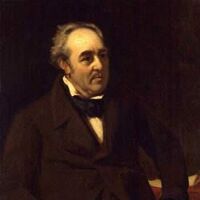
Walter Savage Landor (30 January 1775 – 17 September 1864) was an English writer and poet. His best known works were the prose Imaginary Conversations, and the poem Rose Aylmer, but the critical acclaim he received from contemporary poets and reviewers was not matched by public popularity. As remarkable as his work was, it was equalled by his rumbustious character and lively temperament. Summary of his work In a long and active life of eighty-nine years Landor produced a considerable amount of work in various genres. This can perhaps be classified into four main areas—prose, lyric poetry, political writings including epigrams and Latin. His prose and poetry have received most acclaim, but critics are divided in their preference between them. Landor’s prose is best represented by the Imaginary Conversations. He drew on a vast array of historical characters from Greek philosophers to contemporary writers and composed conversations between pairs of characters that covered areas of philosophy, politics, romance and many other topics. These exercises proved a more successful application of Landor’s natural ability for writing dialogue than his plays. Although these have many quotable passages the overall effect suffered because he never learned the art of drama. Landor wrote much sensitive and beautiful poetry. The love poems were inspired by a succession of female romantic ideals—Ione, Ianthe, Rose Aylmer and Rose Paynter. Equally sensitive are his “domestic” poems about his sister and his children. In the course of his career Landor wrote for various journals on a range of topics that interested him from anti-Pitt politics to the unification of Italy. He was also a master of the epigram which he used to good effect and wrote satirically to avenge himself on politicians and other people who upset him. Landor wrote over three hundred Latin poems, political tracts and essays, but these have generally been ignored in the collections of his work. Landor found Latin useful for expressing things that might otherwise have been “indecent or unattractive” as he put it and as a cover for libellous material. Fellow classical scholars of the time put Landor’s Latin work on a par with his English writing. Summary of his life Landor’s life is an amazing catalogue of incidents and misfortunes, many of them self-inflicted but some no fault of his own. His headstrong nature and hot-headed temperament, combined with a complete contempt for authority, landed him in a great deal of trouble over the years. By a succession of bizarre actions, he was successively thrown out of Rugby, Oxford and from time to time from the family home. In the course of his life he came into conflict deliberately with his political enemies - the supporters of Pitt - but inadvertently with a succession of Lord Lieutenants, Bishops, Lord Chancellors, Spanish officers, Italian Grand Dukes, nuncio legatos, lawyers and other minor officials. He usually gained the upper hand, if not with an immediate hilarious response, then possibly many years later with a biting epithet. Landor’s writing often landed him on the wrong side of the laws of libel, and even his refuge in Latin proved of no avail in Italy. Many times his friends had to come to his aid in smoothing the ruffled feathers of his opponents or in encouraging him to moderate his behaviour. His friends were equally active in the desperate attempts to get his work published, where he offended or felt cheated by a succession of publishers who found his work either unsellable or unpublishable. He was repeatedly involved in legal disputes with his neighbours whether in England or Italy and Dickens’ characterisation of him in Bleak House revolves around such a dispute over a gate between Boythorn and Sir Leicester Dedlock. Fate dealt with him unfairly when he tried to put into practice his bold and generous ideas to improve the lot of man, or when he was mistaken at one time for an agent of the Prince of Wales and at another for a tramp. His stormy marriage with his long-suffering wife resulted in a long separation, and then when she had finally taken him back to a series of sad attempts to escape. And yet Landor was described as “the kindest and gentlest of men”. He collected a coterie of friends who went to great lengths to help him as “his loyalty and liberality of heart were as inexhaustible as his bounty and beneficence of hand”. It was said that “praise and encouragement, deserved or undeserved, came more readily to his lips than challenge or defiance”. The numerous accounts of those with whom he came in contact reveal that he was fascinating company and he dined out on his wit and knowledge for a great part of his life. Landor's powerful sense of humour, expressed in his tremendous and famous laughs no doubt contributed to and yet helped assuage the slings and arrows of outrageous fortune. “His passionate compassion, his bitter and burning pity for all wrongs endured in all the world, found outlet in his lifelong defence of tyrannicide. His tender and ardent love of children, of animals and of flowers makes fragrant alike the pages of his writing and the records of his life”. Early life Walter Savage Landor was born in Warwick, England, the eldest son of Dr Walter Landor, a physician, and his second wife, Elizabeth Savage. His birthplace, Eastgate House, is now occupied by The King's High School For Girls. His father inherited estates at Rugeley, Staffordshire and his mother was heiress to estates at Ipsley Court and Bishop's Tachbrook in Warwickshire. Landor as the eldest son was heir to these properties and looked forward to a life of prosperity. The family tradition was Whig in reaction to George III and Pitt, and although Landor's brother Robert was the only other member to achieve fame as a writer there was a strong literary tradition in the family. After attending a school at Knowle, he was sent to Rugby School under Dr James, but took offence at the headmaster's review of his work and was removed at Dr James' request. Years later, Landor included references to James in Latin in Simonidea with a mixture of praise and criticism and was subsequently reconciled with him. He then studied privately with Rev. William Langley, vicar of Fenny Bentley and headmaster of Ashbourne Grammar School. Langley was later mentioned in the Imaginary Conversation of Isaak Walton. Landor's temperament and violent opinions caused embarrassment at home and he was usually asked to absent himself when guests were expected. On one occasion he netted and threw in the river a local farmer who objected to his fishing on his property. In 1793 he entered Trinity College, Oxford where he showed rebelliousness in his informal dress and was known as a "mad Jacobin" since he was taken with ideas of French republicanism. His tutor Dr Benwell was impressed by him, but unfortunately his stay was short-lived. In 1794 he fired a gun at the windows of a Tory whose late night revels disturbed him and for whom he had an aversion. He was rusticated for a year, and, although the authorities were willing to condone the offence, he refused to return. The affair led to a quarrel with his father in which Landor expressed his intention of leaving home for ever. Landor went to Tenby in Wales where he had a love affair with a local girl, Nancy Evans, for whom he wrote some of his earliest love poems referring to her as "Ione". Landor's father disapproved and he removed for a time to London, lodging near Portland Place. Ione subsequently had a child who died in infancy. In 1795 Landor brought out a small volume of English and Latin verse in three books entitled The Poems of Walter Savage Landor. Landor also wrote an anonymous Moral Epistle in pamphlet form of nineteen pages, respectfully dedicated to Earl Stanhope. It was a satire in heroic verse condemning Pitt for trying to suppress liberal influences. Although Landor subsequently disowned these "'prentice works", Swinburne wrote "No poet at the age of twenty ever had more vigour of style and fluency of verse; nor perhaps has any ever shown such masterly command of epigram and satire, made vivid and vital by the purest enthusiasm and most generous indignation." Landor was reconciled with his family through the efforts of his friend Dorothea Lyttelton. He later told Forster that he would have married Dorothea if he were financially independent. He did not enter a profession - he did not want the law, and no more did the army want him. His father allowed him £150 a year, and he was free to live at home or not, as he pleased. South Wales and Gebir Landor settled in South Wales, returning home to Warwick for short visits. It was at Swansea that he became friendly with the family of Lord Aylmer, including his sister, Rose, whom Landor later immortalized in the poem, "Rose Aylmer". It was she who lent him "The Progress of Romance" by the Gothic authoress Clara Reeve. In this he found the story "The History of Charoba, Queen of Egypt", which inspired his poem "Gebir". Rose Aylmer sailed to India with an aunt in 1798, and two years later died of Cholera. Ah, what avails the sceptred race, Ah, what the form divine! What every virtue, every grace! Rose Aylmer, all were thine. Rose Aylmer, whom these wakeful eyes May weep, but never see, A night of memories and of sighs I consecrate to thee. In 1798 Landor published "Gebir" the work which established his reputation. "Gebir" tells the story of a prince of Spain who falls in love with his enemy Queen Charoba of Egypt. Southey, reviewed "Gebir" calling it "some of the most exquisite poetry in the language" and was keen to discover the anonymous author. Sidney Colvin wrote "For loftiness of thought and language together, there are passages in Gebir that will bear comparison with Milton" and "nowhere in the works of Wordsworth or Coleridge do we find anything resembling Landor's peculiar qualities of haughty splendour and massive concentration".[4] John Forster wrote "Style and treatment constitute the charm of it. The vividness with which everything in it is presented to sight as well as through the wealth of its imagery, its moods of language - these are characteristics pre-eminent in Gebir".[5] Gifford, on the other hand, who was ever a harsh critic of Landor described it as A jumble of incomprehensible trash... the most vile and despicable effusion of a mad and muddy brain....[6] For the next three years Landor led an unsettled life, spent mainly in London. He became friends with the classics scholar Dr Samuel Parr who lived at Hatton near Warwick and who appreciated Landor as a person and a Latin writer.[2] Landor favoured Latin as a way of expressing playful material without exposing it to public view "Siquid forte iocosius cuivis in mentem veniat, id, vernacule, puderet, non enim tantummodo in luce agitur sed etiam in publico."[7] Latin also had the advantage of being exempt from libel laws in England. Parr introduced Landor to Robert Adair, party organiser for Charles James Fox, who enlisted Landor to write in The Morning Post and The Courier against the ministry of Pitt. Landor published "Poems from the Arabic and Persian" in 1800 and a pamphlet of Latin verses. During this time he met Isaac Mocatta who stimulated his interest in art and exercised a moderating influence, but Mocatta died 1801. In 1802 Landor went to Paris where he saw Napoleon at close quarters, and this was enough to put him off the idea of French republicanism. In the same year he published "Poetry by the Author of Gebir" which included the narrative poems Crysaor and The Phocaeans. Colvin considered Crysaor Landor's finest piece of narrative in blank verse. Landor's brother Robert helped with corrections and additions to "Gebir" and the second edition appeared in 1803. About the same time Landor published the whole poem in Latin, which did little to increase readership but appealed to Parr and was considered by Swinburne to be comparable with the English version in might and melody of line, and for power and perfection of language. Landor travelled the country in constant debt, spending much time at Bath. Here he met Sophia Jane Swift, who was already engaged to her cousin Godwin Swifte, whom she married despite Landor's ardent entreaties in 1803. He called her Ianthe and wrote some of his most beautiful love poems to her. His father died in 1805, which put him in possession of an independent fortune and he settled in Bath, living in grand style.[2] In 1806 he published "Simonidea" which included poems to Ianthe and Ione. It also included "Gunlaug and Helga" a narrative poem from William Herbert's "Select Icelandic poems". At Bristol in 1808 he caught up with Southey, whom he had missed on a trip to the Lake District in the previous year, and the mutual appreciation of the two poets led to a warm friendship. He also wrote a work "The Dun Cow" which was written in defence of his friend Parr who had been attacked in an anonymous work "Guy's Porridge Pot", which Landor was fierce to deny was any work of his. Napoleonic Wars and Count Julian In 1808 he had an heroic impulse to take part in the Peninsular War. At the age of thirty-three, he left England for Spain as a volunteer to serve in the national army against Napoleon. He landed at Corunna, introduced himself to the British envoy, offered 10,000 reals for the relief of Venturada, and set out to join the army of General Joaquín Blake y Joyes. He was disappointed not to take part in any real action and found himself giving support at Bilbao where he was nearly captured. A couple of months later the Convention of Sintra brought an end to the campaign and Landor returned to England. The Spanish Government offered its thanks to him, and King Ferdinand appointed him a Colonel in the Spanish Army. However when the King restored the Jesuits Landor returned his commission.[2] When he returned to England, he joined Wordsworth and Southey in denouncing the Convention of Sintra, which had excited general indignation. In 1809 Landor wrote "Three letters to Don Francisco Riquelme" giving him the benefit of his wisdom as a participant in the war. He wrote an ode in Latin to Gustavus IV of Sweden and wrote to press under various pseudonyms. In 1810 he wrote "a brave and good letter to Sir Francis Burdett." The Spanish experience provided inspiration for the tragedy of Count Julian, based on Julian, count of Ceuta. Although this demonstrated Landor's distinctive style of writing, it suffered from his failure to study the art of drama and so made little impression. The plot is difficult to follow unless the story is previously known and concerns a complicated situation after the defeat of the last Visigoth King of Spain. It carries the moral tone of crime propagating crime. Southey undertook to arrange publication and eventually got it published by Murray in 1812, after an initial refusal by Longmans which led Landor to burn another tragedy "Ferranti and Giulio". Thomas de Quincey later wrote of the work "Mr Landor is probably the one man in Europe that has adequately conceived the situation, the stern self-dependency and monumental misery of Count Julian". Swinburne described it as "the sublimest poem published in our language, between the last masterpiece of Milton (Samson Agonistes) and the first masterpiece of Shelley, (Prometheus Unbound) one equally worthy to stand unchallenged beside either for poetic perfection as well as moral majesty. The superhuman isolation of agony and endurance which encircles and exalts the hero is in each case expressed with equally appropriate magnificence of effect. The style of Count Julian, if somewhat deficient in dramatic ease and the fluency of natural dialogue, has such might and purity and majesty of speech as elsewhere we find only in Milton so long and so steadily sustained." Llanthony and marriage Before going to Spain, he had been looking for a property and settled on Llanthony Abbey in Monmouthshire, a ruined Benedictine abbey. He sold the property at Rugeley which he inherited from his father, and persuaded his mother to sell her Tachbrook estate to contribute to the purchase cost. On his return from Spain he was busy finalising these matters. The previous owner had erected some buildings in the ruins of the ancient abbey, but an Act of Parliament, passed in 1809, was needed to allow Landor to pull down these buildings and construct a house, (which was never finished). He wanted to become a model country gentleman, planting trees, importing sheep from Spain, and improving the roads. There is still an avenue of trees in the area known as "Landor's Larches" and many old chestnuts have been dated back to his time. In 1811 he went to a ball in Bath and seeing a pretty girl exclaimed "That's the nicest girl in the room, and I'll marry her". She was Julia Thuillier, the daughter of an impoverished Swiss banker who had an unsuccessful business at Banbury and had gone to Spain, leaving his family at Bath. They married at St James Church Bath on 24 May 1811 and settled for a while at Llanthony Abbey. Landor had a visit from Southey, after he sent him a letter describing the idylls of country life, including nightingales and glow-worms. However the idyll was not to last long as for the next three years Landor was worried by the combined vexation of neighbours and tenants, lawyers and lords-lieutenant and even the Bishop of St David's, while at the same time he tried to publish an article on Fox, a response to a sycophantic piece by John Bernard Trotter, which was condemned by the prospective publisher John Murray as libellous and damned by Canning and Gifford. His troubles with the neighbours stemmed from petty squabbles, many arising from his headstrong and impetuous nature. He employed a solicitor one Charles Gabell, who saw him as a client to be milked. His trees were uprooted and his timber stolen. A man against whom he had to swear the peace drank himself to death, and he was accused of causing the misfortune and when he prosecuted a man for theft he was insulted by the defendant's counsel (whom he later "chastised" in his Latin poetry). He was fond of revenge through his verse, Latin or otherwise and gave his opinion of his lawyers in the following piece of doggerel. If the devil, a mighty old omnibus driver Saw an omnibus driving downhill to a river And saved any couple to share his own cab I really do think t'would be Gabell & Gabb. When the Bishop failed to reply to his letter offering to restore part of the priory Landor followed up saying "God alone is great enough for me to ask anything of twice". He wanted to become a magistrate and after a row with the Lord Lieutenant, the Duke of Beaufort, who was suspicious of his republican sympathies, he pursued the matter with the Lord Chancellor, Lord Eldon well known as a High Tory without success. He wasted much effort and money in noble attempts to improve the land, and to relieve the wretchedness and raise the condition of the poorer inhabitants. The final straw was when he let his farmland to one Betham who was incompetent and extravagant and paid no rent. After an expensive action to recover the debts from Betham he had had enough, and decided to leave the country, abandoning Llanthony to his creditors - which was principally his mother. In 1814 Landor left England for Jersey, where he had a quarrel with his wife and set off for France on his own. Eventually she joined him at Tours as did his brother Robert. At Tours he met Francis George Hare, father of Augustus Hare and brother of Julius Hare who was to be of great help to him. Landor soon became dissatisfied with Tours and after tremendous conflicts with his landlady set off in September 1815 with his wife and brother on a tempestuous journey to Italy. Florence and Imaginary Conversations Landor and his wife finally settled at Como where they stayed for three years. Even here he had troubles for at the time Caroline of Brunswick, wife of the Prince Regent was living there and Landor was suspected of being an agent involved in watching her in case of divorce proceedings. In 1818 he insulted the authorities in a Latin poem directed against an Italian poet who had denounced England, not realising that the libel laws in Italy (unlike in England) applied to Latin writings as well as Italian. After threatening the regio delegato with a beating he was ordered to leave Como. In September he went to Genoa and Pisa. He finally settled at Florence in 1821. After two years in apartments in the Medici Palace, he settled with his wife and children at the Villa Castiglione. In this, the most important period in his literary career, he produced some of his best known works - the Imaginary Conversations. It was at this time that Lady Blessington and her husband were living at Florence and became firm friends. The first two volumes of his Imaginary Conversations appeared in 1824 with a second edition in 1826; a third volume was added in 1828; and in 1829 the fourth and fifth volumes were published. Not until 1846 was a fresh instalment added, in the second volume of his collected and selected works. With these works, Landor acquired a high, but not wide literary reputation. He had various disputes with the authorities in Florence. The theft of some silver led to altercations with the police, whose interviews with tradesmen ended up defining him as a "dangerous man", and the eventual upshot was that the Grand Duke banished him from Florence. Subsequently the Grand Duke took the matter good-naturedly, and ignored Landor's declaration that, as the authorities disliked his residence, he should reside there permanently. In 1829, Landor bought the Villa Gherardesca at Fiesole helped by a generous loan from Joseph Ablett of Llanbedr Hall, Denbighshire. Here he had a dispute with a neighbour about water rights, which led to a lawsuit and a challenge, although the English Consul Kirkup succeeded in arranging the point of honour satisfactorily. Landor was visited by William Hazlitt and Leigh Hunt, and was on intimate terms with Charles Armitage Brown. It was at this time he became acquainted with Edward John Trelawny who he included in volume IV of Imaginary Conversations. His mother, with whom he had always corresponded affectionately, died in October 1829 and his cousin Walter Landor of Rugeley took over the management of the estate in Wales. Landor was happy at Villa Gherardesca for several years, writing books, playing with his children whom he adored and with the nightingales, and planting his gardens. He had many visitors, most notably in 1829 Jane Swift (Ianthe) now a widow, who inspired him to write poetry again. Later came Henry Crabb Robinson with whom he got on extremely well. In 1831 he published a volume combining Gebir, Count Julian and Other Poems (including 31 to Ianthe). Although this sold only 40 copies, Landor was unconcerned as he was working on "High and Low Life in Italy". This last work he sent to Crabb Robinson for publication but he had difficulties with publishers and it did not appear until 1837. In 1832 Ablett persuaded him visit England, where he met many old friends. He saw Ianthe at Brighton and met Lord Wenlock. He also visited his family in Staffordshire - his brother Charles was rector of Colton, and his cousin Walter Landor of Rugeley was trying to deal with the complex business of Llanthony. He visited Charles Lamb at Enfield, Samuel Coleridge at Highgate, and Julius Hare at Cambridge. He went with Ablett to the Lake District and saw Southey and Coleridge. On returning to Fiesole he found his children out of hand and obtained a German governess for them. Back in Italy he met Richard Monckton Milnes who later wrote about him. He was visited by Ralph Waldo Emerson and worked on the conversations which led to the volumes upon "Shakespeare's Examinations for Deer Stealing", "Pericles and Aspasia", and the "Pentameron". Lady Blessington sold "Shakespeare" for him. In 1835 Ianthe visited again, and brought her half-sister, Mrs Paynter, with her. Landor's wife Julia became jealous, although she already had a younger lover, and their difference of opinion ended in a complete separation. England, Pericles and journalism Landor was 60 by now and went to Lucca where he finished "Pericles and Aspasia" and in September returned to England alone in the autumn. He had an income of about £600 per annum from properties in England, but when he left Italy he made over £400 of the share to his wife, and transferred the villa and farms at Fiesole to his son Arnold absolutely. His income was now £200 a year and he was in financial difficulties. He stayed with Ablett at Llanbedr for three months, spent winter at Clifton and returned to him afterwards, when Ablett persuaded him to write "Literary Hours" which was published the next year. "Pericles and Aspasia", which was to become one of his most appreciated works was published in March 1836. It is in the form of an Imaginary Conversation and describes the development of Aspasia's romance with Pericles, who died in the Peloponnesian War, told in a series of letters to a friend Cleone. The work is one of Landor's most joyous works and is singled out by contemporary critics as an introduction to Landor at his best. On one occasion Landor was travelling to Clifton incognito and chatting to a fellow traveller when the traveller, John Sterling, observed that his strange paradoxical conversation sounded like one of Landor's Imaginary Conversations. Landor covered his retreat, but later became acquainted formally with Sterling. Also in 1836, Landor met John Forster who became his biographer, having become friends after Forster's review of his "Shakespeare". Later that year went to Heidelberg in Germany hoping to meet his children, but was disappointed. He wrote more imaginary conversations including one between Lord Eldon and Escombe. When a lady friend rebuked him for this on the basis that Eldon was now over eighty, Landor replied unmoved with the quip "The devil is older". He had several other publications that year besides Pericles, including "Letter from a Conservative", "A Satire on Satirists" which included a criticism of Wordsworth's failure to appreciate Southey, Alabiadas the Young Man, and "Terry Hogan", a satire on Irish priests. He wintered again at Clifton where Southey visited him. It is possible that Ianthe was living at Bristol, but the evidence is not clear, and in 1837 she went to Austria, where she remained for some years. After leaving Clifton, Landor travelled around and visited Armitage Brown at Plymouth. He established many friendships including John Kenyon and Sir William Napier. At the end of the year he published "Death of Clytemnestra" and "The Pentalogia", containing five of his finest shorter studies in dramatic poetry. The last piece to be published was "Pentameron". Although this had no financial success it was much admired by his friends including Kenyon, Julius Hare, Crabb Robinson, Elizabeth Barrett Browning who said "some of the pages are too delicious to turn over", and Leigh Hunt who reckoned it Landor's masterpiece. In the spring of 1838 he took a house in Bath and wrote his three plays the "Andrea of Hungary", "Giovanna of Naples", and "Fra Rupert". These plays are in the form of a trilogy in the first of which Fra Rupert contrives the death of Andrea husband of Giovanna. Giovanna is suspected but acquitted in the second play. In the third play Fra Rupert is discovered. George Saintsbury described these as a historical novel thrown into conversational dramatic form. In 1839 Landor's attempts to publish the plays were caught up in a dispute between Bentley and Dickens and Forster which caused considerable delay. Again, although these plays, or "conversations in verse" did not succeed with the public, Landor gained warm admirers, many of whom were his personal friends. Southey's mind was giving way when he wrote a last letter to his friend in 1839, but he continued to mention Landor's name when generally incapable of mentioning any one. Landor wandered around the country again, frequently visiting London, where he usually stayed with Lady Blessington, whom he had known at Florence. Mrs Paynter, and her daughter Rose Paynter were at Bath and Landor's letters and verses to Rose are among his best works. Rose later married Charles Graves-Sawle of Restormel in Cornwall. Landor met Charles Dickens and they enjoyed each other's company despite the age difference. Landor greatly admired Dickens' works, and was especially moved by the character of Nell Trent (from The Old Curiosity Shop). Landor was affectionately adapted by Dickens as Lawrence Boythorn in Bleak House.[2] He was the godfather of Dickens's son Walter Landor Dickens. He also became introduced to Robert Browning who sent him a dedicated copy of his work. Landor received a visit from his son Arnold in 1842 and in that year wrote a long essay on Catullus for Forster who was editor of "Foreign Quarterly Review" and followed it up with The Idylls of Theocritus. Super was critical of the essays claiming "A more thoroughly disorganised work never fell from his pen". In 1843 he mourned the death of his friend Southey and dedicated a poem in the Examiner. Landor was visited by his children Walter and Julia and published a poem to Julia in Blackwood's magazine. By that dejected city, Arno runs, Where Ugolino claspt his famisht sons. There wert thou born, my Julia! there thine eyes Return'd as bright a blue to vernal skies. And thence, my little wanderer! when the Spring Advanced, thee, too, the hours on silent wing Brought, while anemonies were quivering round, And pointed tulips pierced the purple ground, Where stood fair Florence: there thy voice first blest My ear, and sank like balm into my breast: For many griefs had wounded it, and more Thy little hands could lighten were in store. But why revert to griefs? Thy sculptured brow Dispels from mine its darkest cloud even now. And all that Rumour has announced of grace! I urge, with fevered breast, the four-month day. O! could I sleep to wake again in May. In the following year his daughter Julia returned and gave him a dog Pomero, who was a faithful companion for a long time. In the same year, he published a poem to Browning in the Morning Chronicle. Forster and Dickens used to visit Bath, to celebrate Landor's birthday and Charles I's execution on the same day. Forster helped Landor in publishing his plays and the 'Collected Works' in 1846, and was employed on The Examiner to which Landor frequently contributed on political and other subjects. Forster objected to the inclusion of some Latin poetry, and so Landor published his most important Latin work 'Poemata et Inscriptiones' separately in 1847. This consisted of large additions to the main contents of two former volumes of idyllic, satiric, elegiac and lyric verse. One piece referred to George IV whose treatment of Caroline of Brunswick had been distasteful to Landor. Heic jacet, Qui ubique et semper jacebat Familiae pessimae homo pessimus Georgius Britanniae Rex ejus nominis IV Arca ut decet ampla et opipare ornata est Continet enim omnes Nerones. (Here lies a person who was always laying about all over the place - the worst member of the worst family - George the fourth of that name of Britain. It is suitable that the vault be large and excessively decorated as it contains all the Neros). Landor's distaste for the House of Hanover is more famously displayed in the doggerel that many do not realise is his composition. George the First was always reckoned Vile, but viler George the Second. And what mortal ever heard Any good of George the Third, But when from earth the Fourth descended God be praised the Georges ended In 1846 he also published the 'Hellenics', including the poems published under that title in the collected works, together with English translations of the Latin idyls. In this year he first met Eliza Lynn who was to become an outstanding novelist and journalist as Lynn Linton, and she became a regular companion in Bath. Now aged over seventy Landor was losing many of his old friends and becoming more frequently ill himself. On one occasion when staying with the Graves-Sawle he visited Exeter and sheltered in the rain on the doorstep of a local barrister James Jerwood. Jerwood mistook him for a tramp and drove him away. Landor's follow-up letter of abuse to the barrister is magnificent. In 1849 he wrote a well-known epitaph for himself on his 74th birthday. I strove with none, for none was worth my strife. Nature I loved, and, next to nature, Art; I warm'd both hands before the fire of Life; It sinks, and I am ready to depart. However he was leading an active social life. Tennyson met him in 1850 and recorded how while another guest fell downstairs and broke his arm, "Old Landor went on eloquently discoursing of Catullus and other Latin poets as if nothing had happened".[12] Thomas Carlyle visited him and wrote "He was really stirring company: a proud irascible, trenchant, yet generous, veracious, and very dignified old man".[12] In 1851 Landor expressed interest in Church reform with a pamphlet "Popery, British and Foreign", and Letters to Cardinal Wiseman. He published various other articles in The Examiner, Fraser's Magazine and other journals. During the year he learnt of the death of his beloved Ianthe and wrote in tribute to her. Sophia! whom I seldom call'd by name, And trembled when I wrote it; O my friend Severed so long from me! one morn I dreamt That we were walking hand in hand thro' paths Slippery with sunshine: after many years Had flown away, and seas and realms been crost, And much (alas how much!) by both endured We joined our hands together and told our tale. And now thy hand hath slipt away from mine, And the cold marble cramps it; I dream one, Dost thou dream too? and are our dreams the same? In 1853 he published the collected "Imaginary Conversations of the Greeks and Romans" which he dedicated to Dickens. Dickens in this year published "Bleak House" which contained the amazingly realistic characterisation of Landor as Boythorn. He also published "The Last Fruit off an Old Tree", containing fresh conversations, critical and controversial essays, miscellaneous epigrams, lyrics and occasional poems of various kind and merit, closing with Five Scenes on the martyrdom of Beatrice Cenci. Swinburne described these as "unsurpassed even by their author himself for noble and heroic pathos, for subtle and genial, tragic and profound, ardent and compassionate insight into character, with consummate mastery of dramatic and spiritual truth."[13] At this time Landor was interesting himself in foreign affairs, in particular Czarist oppression as he saw it and Louis Napoleon. At the end of 1854 his beloved sister Elizabeth died and he wrote a touching memorial. "Sharp crocus wakes the froward year; In their old haunts birds reappear; From yonder elm, yet black with rain, The cushat looks deep down for grain Thrown on the gravel-walk; here comes The redbreast to the sill for crumbs. Fly off! fly off! I can not wait To welcome ye, as she of late. The earliest of my friends is gone. Alas! almost my only one! The few as dear, long wafted o'er, Await me on a sunnier shore." In 1856 at the age of 81 he published Antony and Octavius: Scenes for the Study, twelve consecutive poems in dialogue, and "Letter to Emerson", as well as continuing Imaginary Conversations. Final Tragedies and return to Italy In the beginning of 1857, Landor's mind was becoming weakened and he found himself in some unpleasant situations. He became involved in a court case because he had published statements when the case was sub judice and was insulted by counsel as a poor old man brought in to talk twaddle. He then became embroiled in a miserable quarrel between two ladies he knew. He gave one of them, Geraldine Hooper £100, a legacy received from his friend Kenyon. Unknown to Landor she transferred half of it to the other lady a Mrs Yescombe. They then quarreled and the Mrs Yescombe accused Hooper of having obtained the money from Landor for dishonourable reasons. Landor in his fury wrote a pamphlet "Walter Savage Landor and the Honourable Mrs Yescombe" which was considered libellous. Forster persuaded Landor to apologise. Then in 1858 he produced a miscellaneous collection called "Dry Sticks Fagoted by W. S. Landor", which contained among other things some epigrammatic and satirical attacks which led to further libel actions. In July that year Landor returned to Italy for the last six years of his life. He was advised to make over his property to his family, on whom he now depended. He hoped to resume his life with his wife and children but found them living disreputably at the Villa Gherardesca and ill-disposed to welcome him. He spent a miserable ten months at his villa, and fled repeatedly to Florence, only to be brought back again. On the last occasion, he took refuge at a hotel in Florence, with next to nothing in his pocket, and was found by Robert Browning then living at the Casa Guidi. Browning managed to obtain an allowance for him from the family and settled him first at Siena and then at Florence. Landor busied himself with new editions of his works and interested himself in the unification of Italy. He wrote frequently to Eliza Lynn Linton and added to Imaginary Conversations devising any sale proceeds to the relief of Garibaldi's soldiers. Anthony Trollope visited Florence and brought with him an American girl Kate Field who became Landor's protege. He was still charming, venerable, and courteous, and full of literary interests. He taught Kate Field Latin, repeated poetry and composed some last conversations. In 1861, Browning left Italy after the death of his wife. Landor afterwards seldom left the house and remained petulant and uncomfortable, occasionally visited by his sons. He was much concerned about the fate of his picture collection, little of which had any merit, and about preparations for his grave as he hoped to be buried at Widcombe near Bath. He published some Imaginary Conversations in the 'Atheneum' in 1861-2 and in 1863 published a last volume of "Heroic Idyls, with Additional Poems, English and Latin", described by Swinburne as " the last fruit of a genius which after a life of eighty-eight years had lost nothing of its majestic and pathetic power, its exquisite and exalted". Forster's refusal to publish more about the libel case had interrupted their friendship, but they renewed their correspondence before his death. Almost the last event of his life was a visit in 1864 from the poet Swinburne, who visited Florence specifically to see him, and dedicated to him the 'Atlanta in Calydon'.[2] In 1864 on May Day Landor said to his landlady "I shall never write again. Put out the lights and draw the curtains". A few months later he died quietly in Florence at the age of 89. He was buried not after all at Widcombe but in the English Cemetery, Florence, near the tomb of his friend, Elizabeth Barrett Browning. A statue of his wife can also be found in the 'English' Cemetery, above the tomb of their son, Arnold Savage Landor. Later, his Villa Gherardesca in Fiesole would become the home of the American Icelandic scholar Daniel Willard Fiske, who renamed it the 'Villa Landor'. Landor's grandson was the writer explorer and adventurer Arnold Henry Savage Landor. Landor was the close friend of Southey, and Coleridge. His relationship with Wordsworth changed over time from great praise to a certain resentment. Lord Byron tended to ridicule and revile him, and though Landor had little good to say in return during Byron's life he lamented and extolled him as a dead hero. He lavished sympathetic praise on the noble dramatic works of his brother Robert Eyres Landor. Review of Landor's work by Swinburne From nineteen almost to ninety his intellectual and literary activity was indefatigably incessant; but, herein at least like Charles Lamb, whose cordial admiration he so cordially returned, he could not write a note of three lines which did not bear the mark of his Roman hand in its matchless and inimitable command of a style at once the most powerful and the purest of his age. The one charge which can ever seriously be brought and maintained against it is that of such occasional obscurity or difficulty as may arise from excessive strictness in condensation of phrase and expurgation of matter not always superfluous, and sometimes almost indispensable. His English prose and his Latin verse are perhaps more frequently and more gravely liable to this charge than either his English verse or his Latin prose. At times it is well-nigh impossible for an eye less keen and swift, a scholarship less exquisite and ready than his own, to catch the precise direction and follow the perfect course of his rapid thought and radiant utterance. This apparently studious pursuit and preference of the most terse and elliptic expression which could be found for anything he might have to say could not but occasionally make even so sovereign a master of two great languages appear dark with excess of light; but from no former master of either tongue in prose or verse was ever the quality of real obscurity, of loose and nebulous incertitude, more utterly alien or more naturally remote. There is nothing of cloud or fog about the path on which he leads us; but we feel now and then the want of a bridge or a handrail; we have to leap from point to point of narrative or argument without the usual help of a connecting plank. Even in his dramatic works, where least of all it should have been found, this lack of visible connection or sequence in details of thought or action is too often a source of sensible perplexity. In his noble trilogy on the history of Giovanna queen of Naples it is sometimes actually difficult to realize on a first reading what has happened or is happening, or how, or why, or by what agency a defect alone sufficient, but unhappily sufficient in itself, to explain the too general ignorance of a work so rich in subtle and noble treatment of character, so sure and strong in its grasp and rendering of high actions and high passions, so rich in humour and in pathos, so royally serene in its commanding power upon the tragic mainsprings of terror and of pity. As a poet, he may be said on the whole to stand midway between Byron and Shelley—about as far above the former as below the latter. If we except Catullus and Simonides, it might be hard to match and it would be impossible to overmatch the flawless and blameless yet living and breathing beauty of his most perfect elegies, epigrams or epitaphs. As truly as prettily was he likened by Leigh Hunt to a stormy mountain pine which should produce lilies. He was a classic, and no formalist; the wide range of his admiration had room for a genius so far from classical as Blake's. Nor in his own highest mood or method of creative as of critical work was he a classic only, in any narrow or exclusive sense of the term. On either side, immediately or hardly below his mighty masterpiece of Pericles and Aspasia, stand the two scarcely less beautiful and vivid studies of medieval Italy and Shakespeare in England. References Wikipedia - http://en.wikipedia.org/wiki/Walter_Savage_Landor
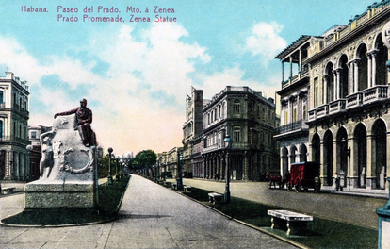
.jpeg?locale=fr)
Juan Clemente Zenea, escritor cubano nació en Bayamo, Granma, el 24 de febrero de 1832. Se reconoce que ejerció gran influencia en la literatura cubana al retomar el Romanticismo, marcando una nueva línea en la poesía hispanoamericana. Se vio obligado a emigrar a Estados Unidos en 1852. Desde allí llevó a cabo una fuerte campaña contra el gobierno español. Fue condenado a muerte en La Habana en 1853 por sus actividades en contra del gobierno, pero debido a la amnistía general es perdonado y puede regresar a Cuba al año siguiente. Al comenzar la guerra de 1868 en Cuba regresa a los Estados Unidos para colaborar con la causa. Logra llegar a Cuba clandestinamente en 1870 y, luego de una entrevista con Carlos Manuel de Céspedes, líder del alzamiento, fue apresado por las tropas españolas tratando de regresar a los Estados Unidos y fusilado en 1871.
.jpg?locale=fr)
Poeta del romanticismo, pluma de oro del continente americano. Rafael María Baralt (Maracaibo, Venezuela, 3 de julio de 1810 - Madrid, España, 4 de enero de 1860), fue un escritor, periodista, Ingeniero (el primero egresado de la Academia Militar de Matemáticas en 1836) historiador, filólogo, crítico y poeta venezolano, autor del primer diccionario de galicismos del español, y primer latinoamericano en ocupar un sillón en la Real Academia Española. Datos biográficos Don Rafael María Baralt nació en la ciudad de Maracaibo, capital del estado Zulia (Venezuela), el día 3 de julio de 1810. Su nacimiento ocurrió en medio del movimiento de independencia de Venezuela, colonia de la corona española por más de tres siglos. Era hijo del Coronel venezolano Don Miguel Antonio Baralt y de doña Ana Francisca Pérez, oriunda de la República Dominicana, y no tuvo hijos. Debido a las vicisitudes políticas de aquel tiempo de guerras, la familia Baralt Pérez se trasladó a Santo Domingo, donde transcurrió la mayor parte de la infancia de Rafael María Baralt. La familia regresó a la ciudad de Maracaibo en 1821, donde Baralt vivió durante cinco años. En 1827 su tío paterno, don Luis Baralt, le llevó a la ciudad de Bogotá, Colombia, para comenzar sus estudios superiores. Estudios y vida pública Fue estudiante de la célebre Universidad de Bogotá, donde cursó los estudios de latín y de filosofía y obtuvo el título de bachillerato en 1830. Desde entonces formó parte de la política y la milicia venezolana contra los reformistas en 1835, llegando al rango de capitán de artillería, para luego ocupar un cargo en el Ministerio de Guerra. En 1840 viajó a París para editar su Resumen de la Historia de Venezuela y Diccionario de Galicismos. El 13 de septiembre de 1841 se va definitivamente de Venezuela. Primero viaja a Londres y luego se radica en Sevilla y en Madrid. Allí realizó la mayor parte de su abundante obra literaria. Entre sus obras ocupa un lugar importante su oda 'Adiós a la Patria', considerada de una impresionante riqueza poética. También ocupó importantes cargos en el Reino de España, como Director de la Gaceta de la Corona, Administrador de la Imprenta Nacional, etc. Fue el primer hispanoamericano en ser elegido individuo de Número de la RAE. Muere el 4 de enero de 1860 en Madrid, España, sin haber cumplido los 50 años de edad. Moralmente abatido tras un juicio que se le siguió en Madrid, -pese a que se le reivindicó públicamente - no resistió más de tres años hasta su muerte. Fue también redactor, en febrero de 1829, del periódico zuliano 'El Patriota del Zulia'. No fue sino hasta 1842 (tenía 32 años de edad), cuando inicia su obra poética, que lo convierte en uno de los zulianos más destacados. 'Adiós a la Patria', su poema más importante y extenso, contiene estrofas que irá agregando hasta los días cercanos a su muerte: Tierra del sol amada Donde inundado de tu luz fecunda En hora malhadada Y con la faz airada Me vio el lago nacer que te circunda. Las últimas estrofas del poema son las siguientes: No te duela mi suerte, No maldigas mi nombre, no me olvides Que, aún vecino a la muerte, Pediré con voz fuerte Victoria a Dios para tus justas lides Dichoso yo si un día A ti me vuelve compasivo el cielo, I me da, patria mía Digno sepulcro en tu sagrado suelo Después de su muerte, sus restos se extraviaron y transcurrieron 122 años para su regreso a Venezuela. Aunque el Senado venezolano le había concedido el derecho a ser sepultado en el Panteón Nacional desde 1943, es el 24 de noviembre de 1982, cuando sus restos finalmente regresan a Venezuela e ingresan al Panteón Nacional, después de haber pasado una noche en la alcaldía de su querida Maracaibo. En 1982 fue creada en la ciudad de Cabimas, en la Costa Oriental del Lago de Maracaibo, una universidad que actualmente lleva su nombre: Universidad Nacional Experimental Rafael María Baralt (UNERMB). Bicentenario de su nacimiento El día 04 de julio de 2010, en las instalaciones del Teatro Baralt en Maracaibo, se realizó un acto con motivo del bicentenario del prócer zuliano, el discurso de orden estuvo a cargo del Dr. Julio Portillo presidente de la academia de la historia del Zulia, destaco las actividades en las cuales se involucró Baralt. Resaltando la jurisprudencia sobre el secreto de la correspondencia diplomática, originada a raíz del éxito en la corte de Baralt contra la causa interpuesta en su contra, así mismo se destacó el hecho que recibió como homenaje ser proclamado hijo de la República Dominicana. Destacó también su rol como político cuya obra ya se orientaba hacia lo que posteriormente seria enunciado como el bien común y su disyuntiva hacia lo que seria conocido como el materialismo histórico, su trabajo se orientaba hacia la descentralización política y administrativa de las regiones, junto con el General Urdaneta fue responsable del reconocimiento de la independencia del Zulia y Venezuela, acción autorizada por medio de pasaportes Zulianos, pues para la época Venezuela no era reconocida como nación soberana aún. Se puede considerar un error histórico y una negación del rol la negativa del gobierno central en proclamar su bicentenario y conducir los actos, durante el cierre de la actividad se hizo un llamado a los intelectuales del Zulia para que en 11 años se elaborara la agenda del Zulia por venir y de esta forma iniciar la celebración del bicentenario de la independencia del Zulia. Referencias Wikipedia - http://es.wikipedia.org/wiki/Rafael_María_Baralt
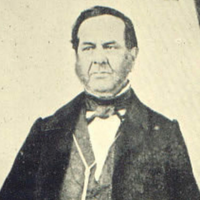
Francisco Esteban Acuña de Figueroa (Montevideo, 3 de septiembre de 1791 – ídem, 6 de octubre de 1862) fue un escritor y poeta uruguayo. Biografía Fue hijo del Tesorero de la Real Hacienda Jacinto Acuña de Figueroa. Cursó sus primeros estudios en el Convento de San Bernardino, y los termina en Buenos Aires en el Real Colegio de San Carlos, de donde vuelve en 1810 habiendo realizado estudios en Letras. Pasa a ser el autor de la letra de los himnos nacionales de Uruguay y Paraguay, no se adhiere a la causa independentista, sino que se mantiene leal a los gobiernos coloniales de Francisco Javier de Elío y Vigodet, y al caer Montevideo en 1814, con unos 25 años de edad, se exiliara a la Corte portuguesa de Río de Janeiro (ciudad) Río de Janeiro, donde desempeña funciones diplomáticas para España. Por el contrario su padre permanece en Montevideo, donde es confirmado en sus cargos por el nuevo gobierno dada su capacidad para el cargo. Retorna a Montevideo en 1818, después de la caída de José Artigas, al quedar la ciudad bajo el dominio portugués, y ya permanece allí. Además de su labor literaria, ocupa los cargos de Tesorero del Estado (sucede a su padre), miembro de la Comisión de censora de las obras teatrales ( en 1846), y Director de la Biblioteca y Museo Público (1840 - 1847). Obra Es el autor de las letras del Himno Nacional Uruguayo y del Himno Nacional Paraguayo. Tenía además una extensa obra literaria, recopilada por él mismo en 1848 y publicada póstumamente en 1890, en 12 tomos, bajo el título genérico de "Obras Completas". Está compuesta por numerosos poemas, relatos, etc. Muchas de sus obras tiene un marcado tono satírico. Una antología de sus poemas fue publicada en 1965 en la colección de clásicos uruguayos de la Biblioteca Artigas. Una de sus obras más curiosas es la Salve Multiforme, de la que dice el autor : "La Salve Multiforme tiene dos aplicaciones, dos objetos diferentes. El primero, el más esencial y determinado es puramente religioso; el segundo tiene una aplicación profana o política. Bajo aquel primer aspecto es un tributo de veneración y aplauso inagotable a la divina reina del cielo, es la oración de la Salve presentada y reproducible en casi infinitas formas: tantas, que no bastarían muchos millones de años de continuada e incesante lectura para apurar todas las paráfrasis posibles de aquella oración, más o menos diversas, que según este método se pueden conformar. (...) El autor ha dividido la salve en 44 fragmentos, colocados sucesivamente en otras tantas columnas, numeradas desde 1 a 44. Cada fragmento tiene en su propia columna 26 paráfrasis de él mismo, o al menos, palabras aparentes a aquel lugar, y combinables con cualquiera de los 27 fragmentos de las columnas antecendentes y siguientes, sin quebrantar el sentido de la Salve, que así se va conformando guardando la sintaxis gramatical; sin repetir en una Salve entera un fragmento ya usado en ella misma. (...)Resulta, pues, que tomándose al acaso un fragmento cualquiera de la columna 1ra., otro cualquiera de la 2da., otro de la 3ra., etc., siguiendo así hasta la columna 44 se formará siempre una paráfrasis completa de la salve, tal vez elegante, tal vez débil, pero nunca impropia o incoherente en su sentido. Siendo, pues, 27 los fragmentos de la 1ra. columna, combinables libremente con cualquiera de los 27 siguientes, y éstos con los sucesivos, y así progresiva y mutuamente con los de las demás columnas, es evidente que se pueden combinar y se combinan, millones de millones de Salves, más o menos diversas, es decir, con más o menos diferencias de fragmentos entre sí. En llegado a la columna 44 se añade la palabra amén o así sea, que está en la columna última o supletoria, para terminar debidamente cada oración de aquellas. Referencias Wikipedia-http://es.wikipedia.org/wiki/Francisco_Acu%C3%B1a_de_Figueroa
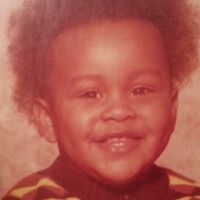
I was born in chicago public housing in the mid 70s. The lack of a male role model drove me in the wrong direction. I've always had a creative mind, I left home at an early age an spent most of my time in the streets. It was there I found my way into music an managed to get a record deal with an independent label. Things didn't go accordingly I ended up dealing drugs which almost cost me my life. Today I'm just a lonely soul trying to find its way.
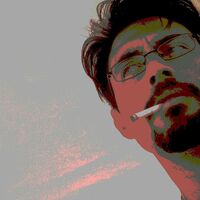
A Constant Poet Tasting The Void I expell words That fill those Places like birds Birthed by This void We writhe In & thrive As syllables Wriggle themselves Like worms Down my hide I am an Intangible vapor Rising in The moments That taper While I strive To remain wild Ever the weaver Of my Lexicon So reviled I the deceiver In bile am Soaked To the bone So Hello to ye I am Ever the one Who bestows wit Where none bleeds Known keenly as A Constant Poet So please Won't you Come in & Flutter yourself Down Around my pen Like bees Plummeting To their knees & Breath Deeply these Columns that Breath sweetly This breeze As I sit Sipping The sea Now Good evening To thee
Un retrato de Normy Allí están todas las palabras diciendo tu nombre Y un ángel dormido se despierta a soñar tus ojos Son muchos los lugares donde llegas Normy Y en espejos de luna contemplo tus lugares Eres la poesía que encierra la levedad del tiempo Donde una vez niña saliste a imaginar palabras Alguien encerró tu talle y llenó de besos tus recodos Alguien soltó el idioma del amor entre tus ojos Pasó un tiempo de ventanas donde eras infinita Y lloraste tu corazón como un río interminable Ahora vuelves a hilar los otros sueños que faltaban Y este poeta te canta diciendo que la nieve son tus ojos Y lejano, Normy, inventándo tu retrato Ese que está en tus ojos con los primeros días del año . Para VOS...y encontrado en tus palabras. Y con muchísimo afecto y humildad.. . Diego Diaz
.jpeg?locale=fr)
Voy a escribir un poema de Borges que vien puede aplicarse a mi biografia: Le fue dada la infamia. Dócilmente estudió los delitos de la espada, la ruina de Cartago, la apretada batalla del Oriente y del Poniente. Le fue dado el lenguaje, esa mentira, Le fue dada la carne, que es arcilla, le fue dada la obscena pesadilla y en el cristal el otro, el que nos mira. De los libros que el tiempo ha acumulado le fueron concedidas unas hojas; de Elea, unas contadas paradojas, que el desgaste del tiempo no ha gastado. La erguida sangre del amor humano (la imagen es de un griego) le fue dada por Aquel cuyo nombre es una espada y que dicta las letras a la mano. Otras cosas le dieron y sus nombres: el cubo, la pirámide, la esfera, la innumerable arena, la madera y un cuerpo para andar entre los hombres. Fue digno del sabor de cada día; tal es tu historia, que es también la mía. No me imagino mas perfecta definicion de mi vida.

Nació en el año de 1985 en el Dovio, municipio del Valle del Cauca, hijo de Libia Echeverry y James Henao, a sus 11 Años muestra inclinación por la poesía y la literatura, lee Libros de Gabriel Garcia Marques, Patrikc Suscking entre otros y poemas de Dario Jaramillo, Mario Bennedeti que son los mas concurridos. Estudio en un Colegio Publico en su tierra natal y a los 18 años se vino a vivir a Cali. Actualmente trabaja como Diseñador gráfico y artista plástico pero su pasión siempre ha sido la literatura y la poesía.

Simply put, I'm a hopeless romantic who likes to write, take photos, meet people, and go on adventures. I want to see the world and show everyone how it looks through my eyes. Not because they should care or because I'm some sort of celebrity, but I feel I can truly make a difference, whether it be big, small, or somewhere in between.

Quiet Child Wild in Dreams Serious Adult to the extreme Dreams shattered then forgotten I have been failed, thrown out, betrayed and beaten There is nothing much left of me Starting my Life over, at age 50. New Dreams, Old Dreams come back to me Come back to me and I promise I'll keep Follow me at http://dlegendre.hubpages.com/

Born in a little town in Texas. Going to be seventeen this upcoming April. Along with poetry, I enjoy reading, playing soccer, and running. I'd like to say I'm healthy and happy. I'm really looking forward to sharing my work, I appreciate constructive criticism. I hope you enjoy these poems as much as I do.
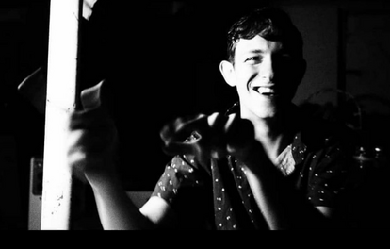

I'm no good at biographies but I'll try my best :) <--- 1st fault, don't start a biography intro like this haha. I live in Australia, Queensland, my house is beautiful and my overseas girlfriend Denise is stunning. I enjoy life but find myself often contradicting, stressing, feeling anxious, sad and all that blah, I do however find a way to convince myself I'm sane haha :P My extraordinarily adorable lamb Denise AKA Bubba Goofe :P keeps me company along with my lil' gingerino cat Smurf, who relieves me from freaking out about the dark :P My family has always been social sometimes it's tiring a frustrating and dysfunctional but we're all lovely social butterfly's, probably the reason I like partying and BBQ, plus I'm a nautical garbage bin. I prefer to be alone because I have adapted to being alone for a majority of my life, I'm an only child, but I dislike being so far away from my princess. Being lonely for so long has allowed me to build character and a strong flow from the chaotic right lobe. I enjoy fine, bold and detailed art, I dislike industrial and overly dramatic art (although I'm dramatic myself I would not like to live with myself haha that would be it irritating :P I also enjoy gaming both board games and electronic, I am an avid player of Minecraft, I hate pop music and enjoy folk, hip hop, alternative, 70's rock, Reggae, psychedelic garage, indie rock, Jack Johnson, Queen, The Beatles, Blink 182, Bright Eyes Chance The Rapper, Kendrick Lamar, Darwin Deez, The Jungle Giants, All Day and lot's of indie rock bands, Tribal seeds, Bob Marley (I'm no hipster) Music is important. I like fantasy books, cartoons, Starwars, The Muppets, Adventure Time (oh but everyone like adventure time, Bing Bang Theory, Destroying Noobs :) I also take an interet in meta physics, philosophy and caring for people. My poems are like me spontaneous, created from a small phrase, idea, song, atmosphere, emotion, so I'm more of an observant poet or a sponge :) But I only want to spark exactly what made me create poems, setting a mental scene or state of mind or cluster of thoughts :)
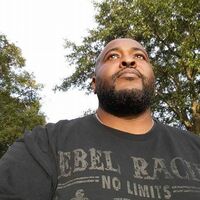
A former athlete/coach. Began writing poetry trying to transition out of sports. Dedicated to my daughter and giving back to my community. I have been involved with every level of sports for 20 years. In working with the youth, my motto is, " I am using sports as a tool to teach life skills."



